
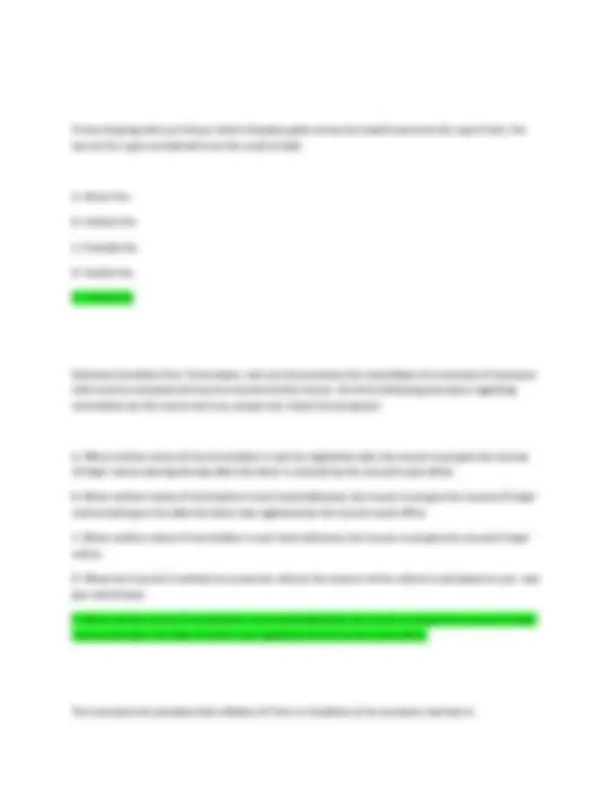

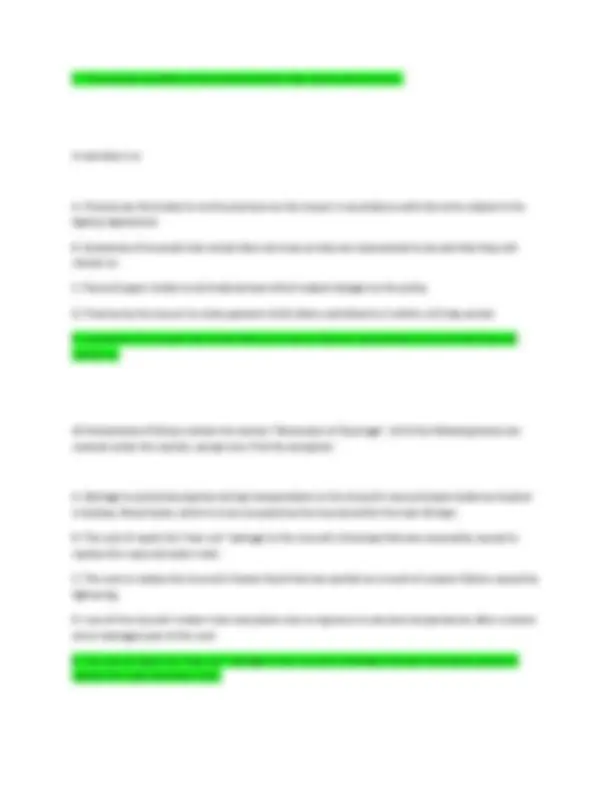
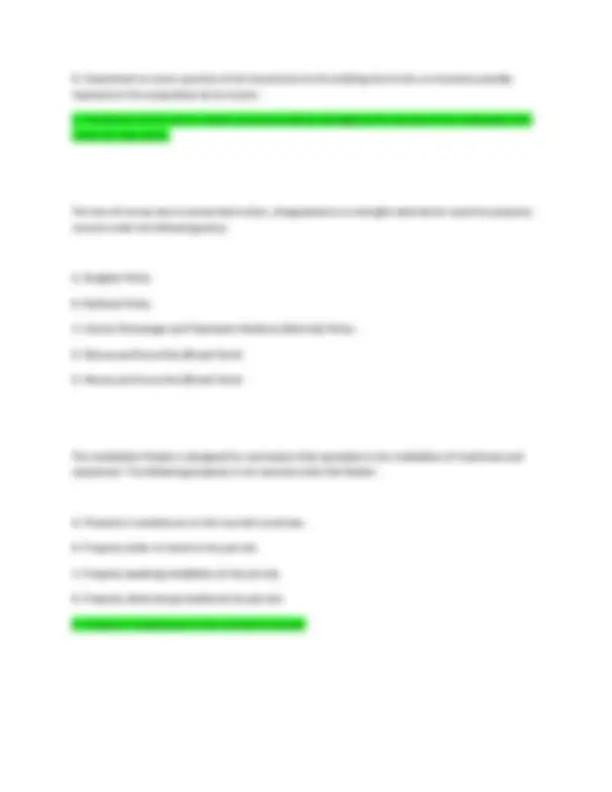
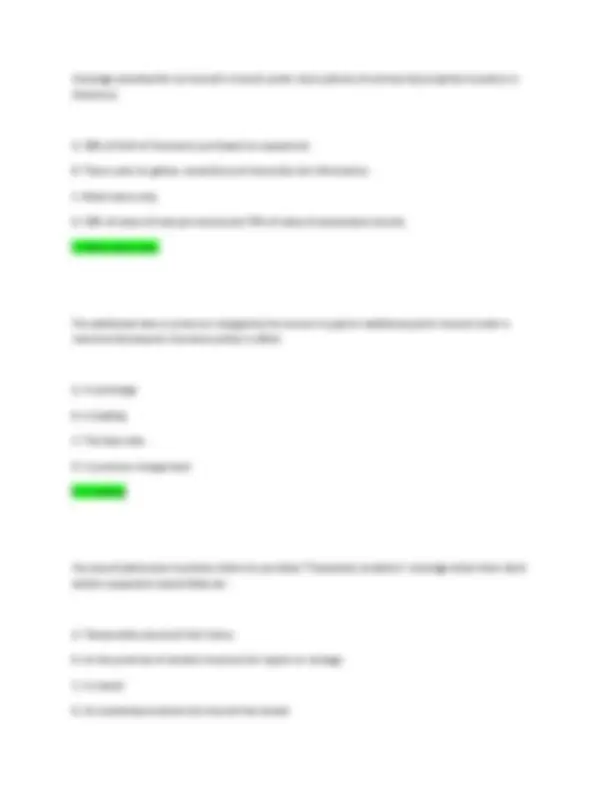
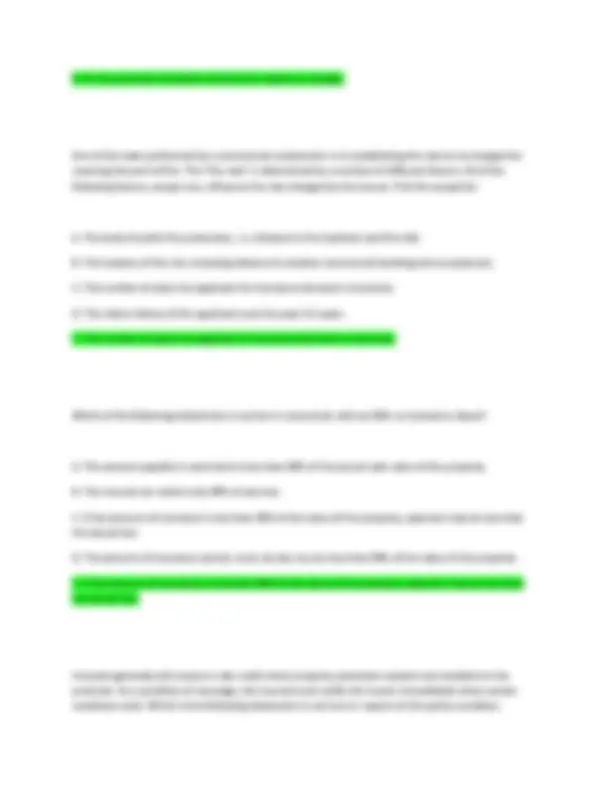
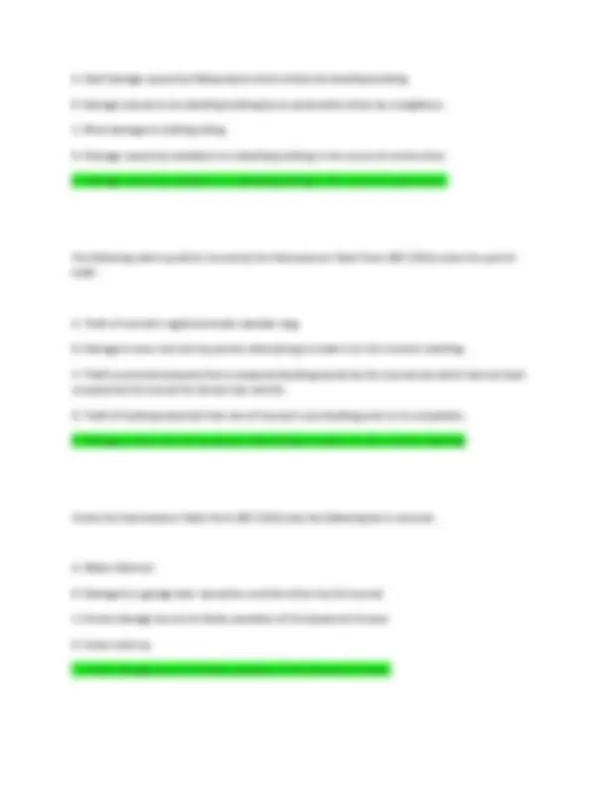
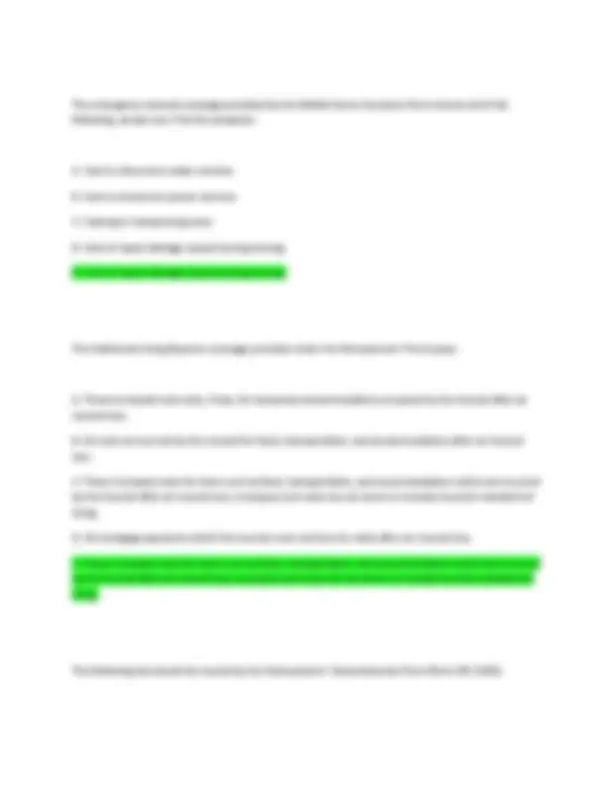
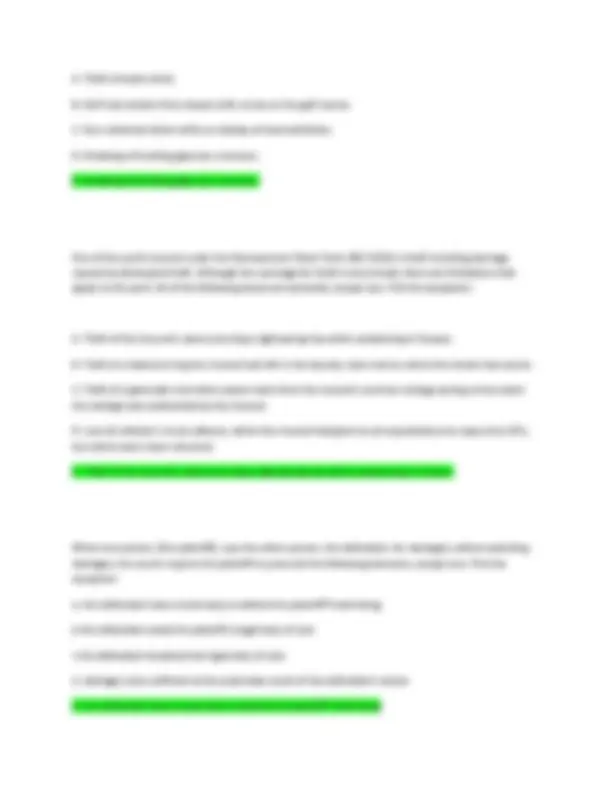
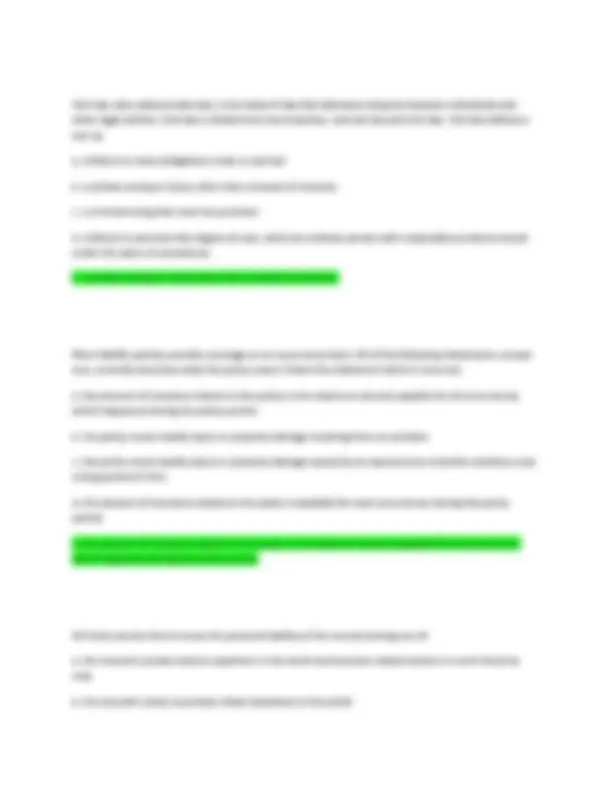
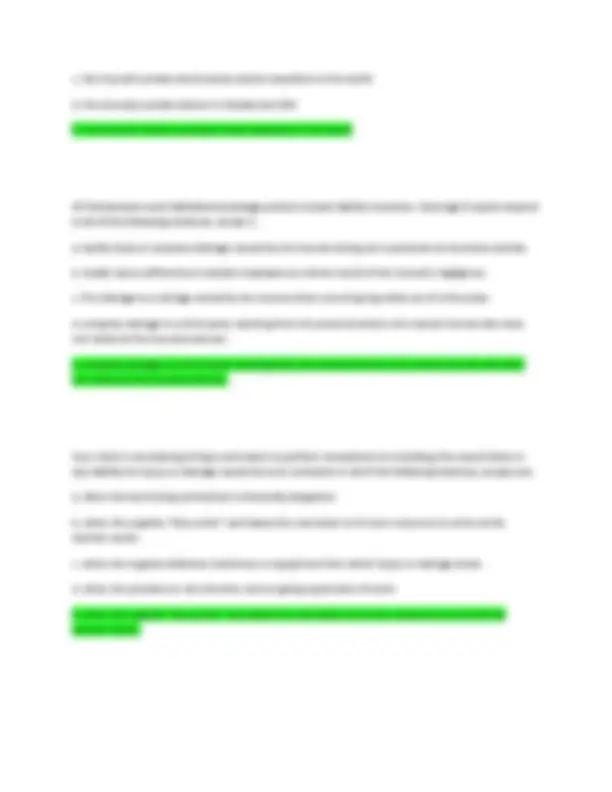
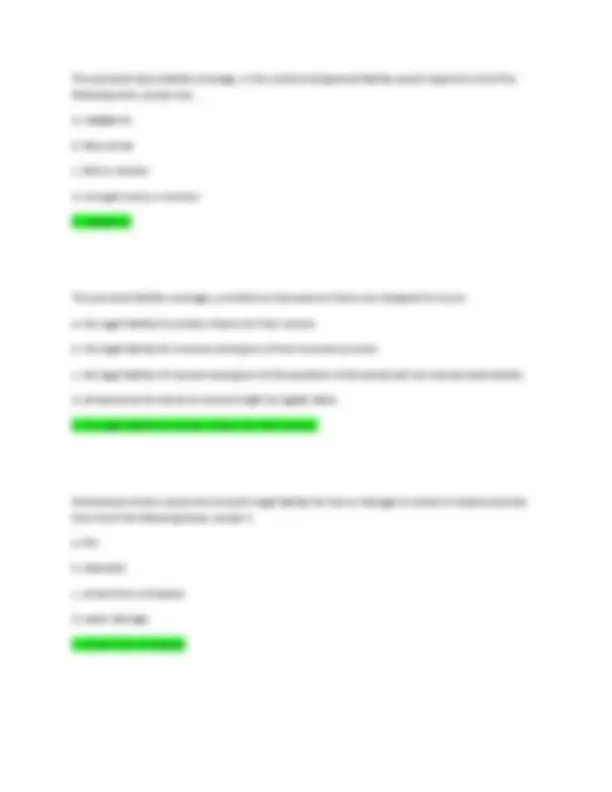
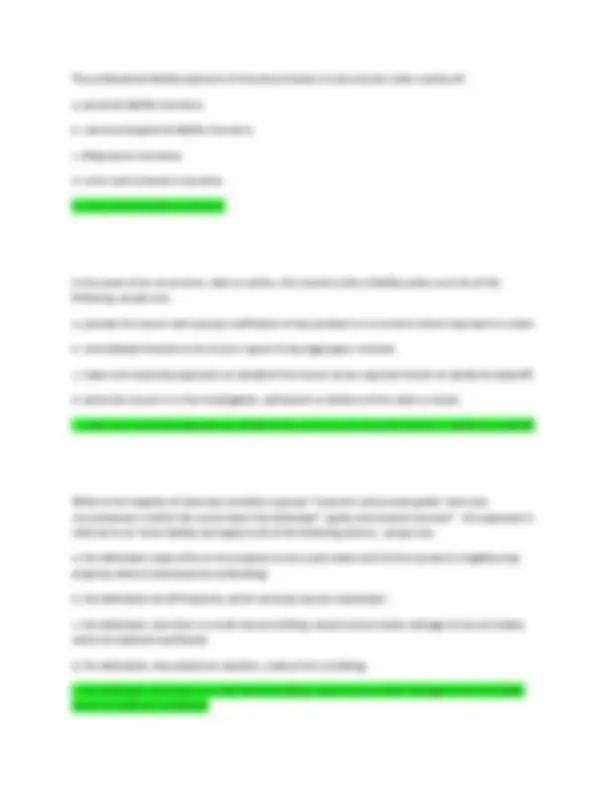
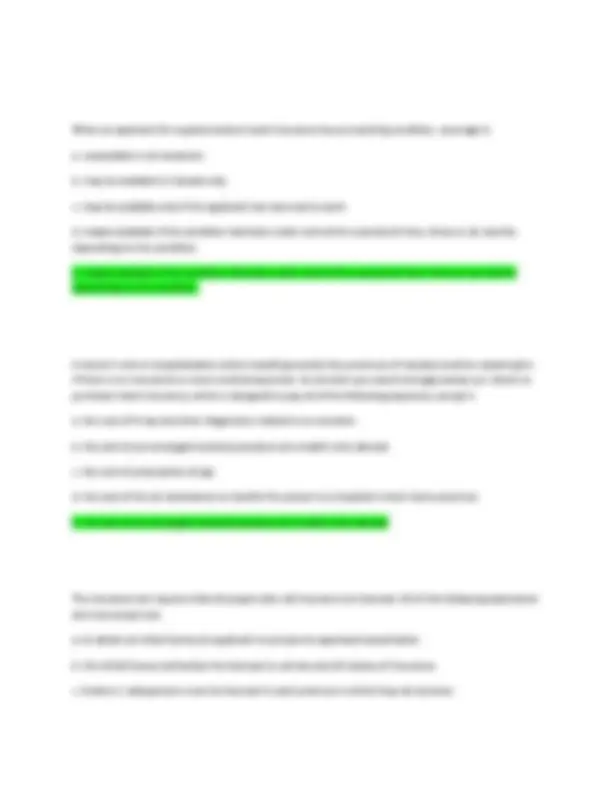
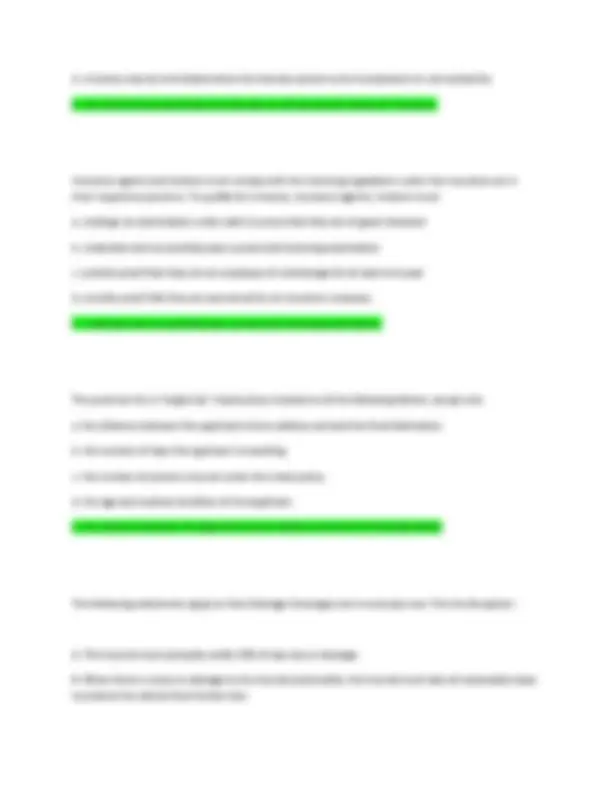
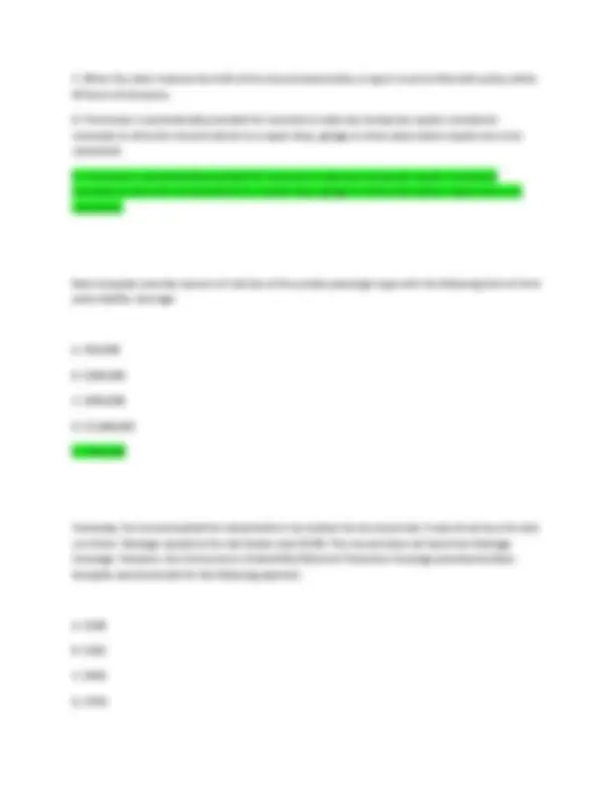
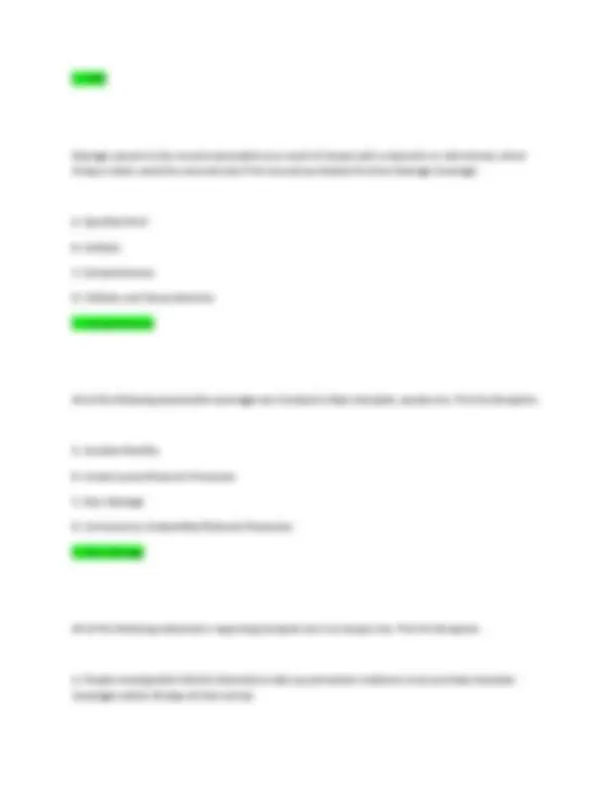
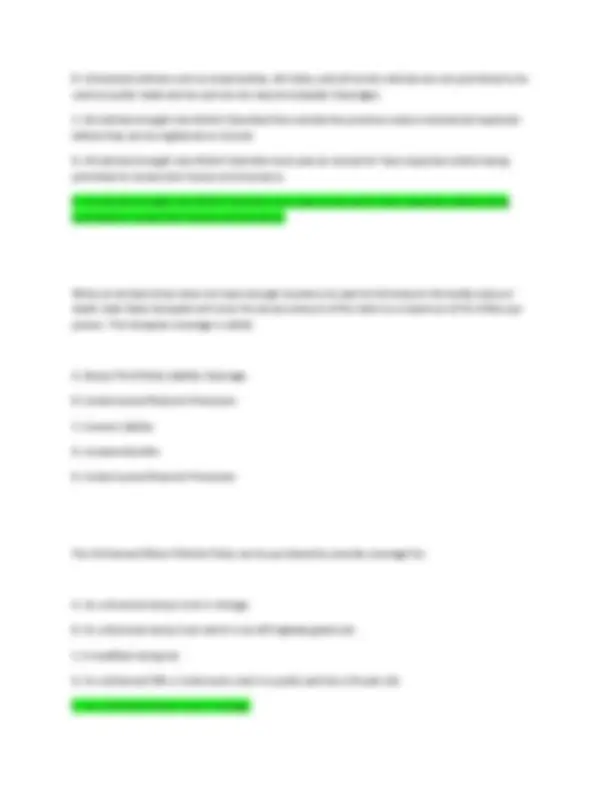
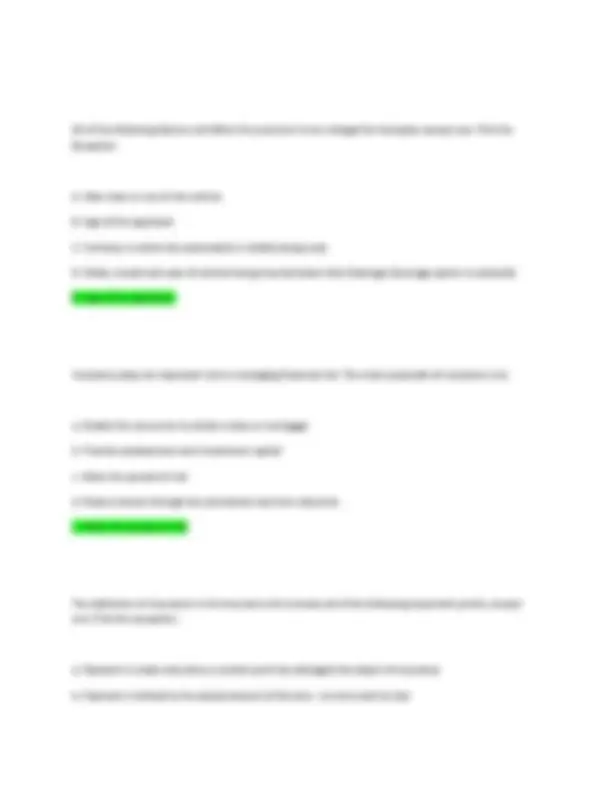

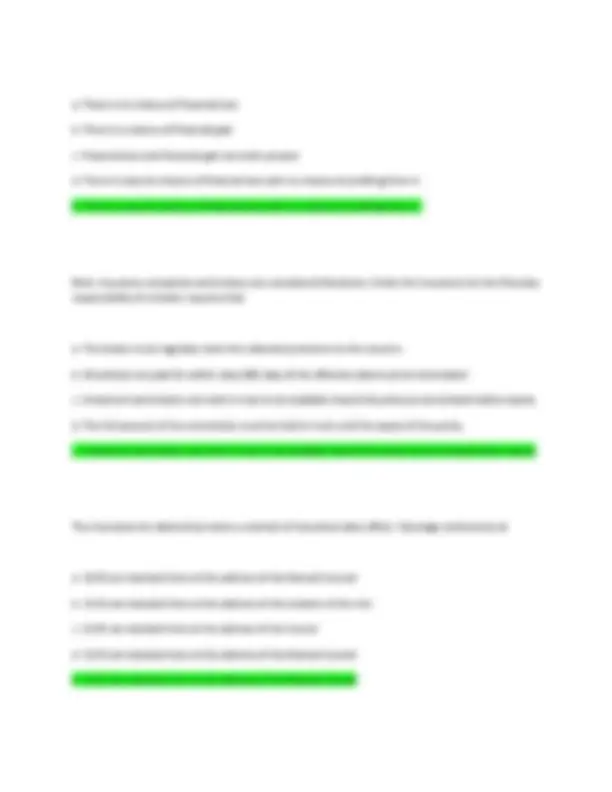
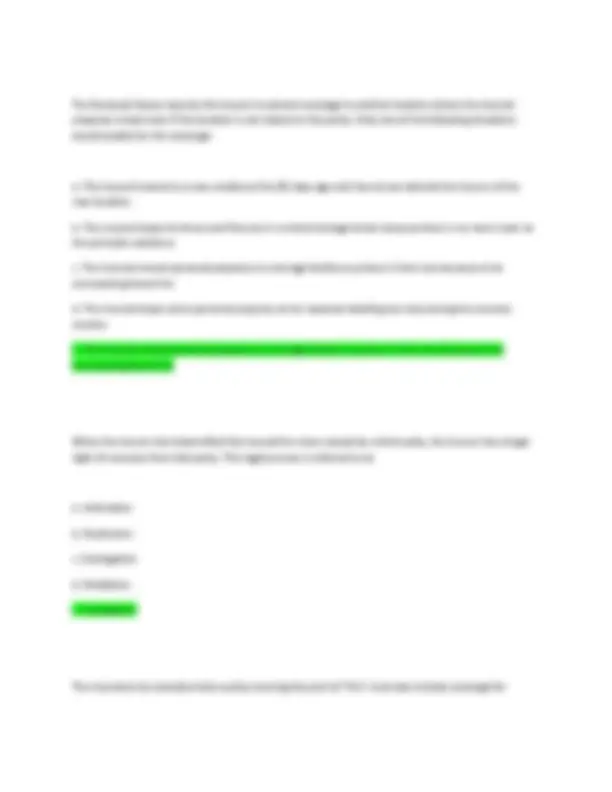
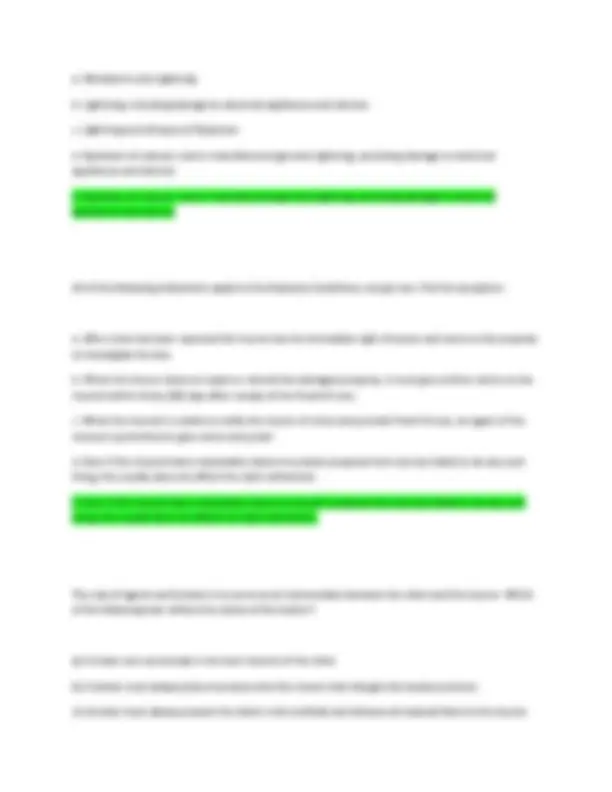
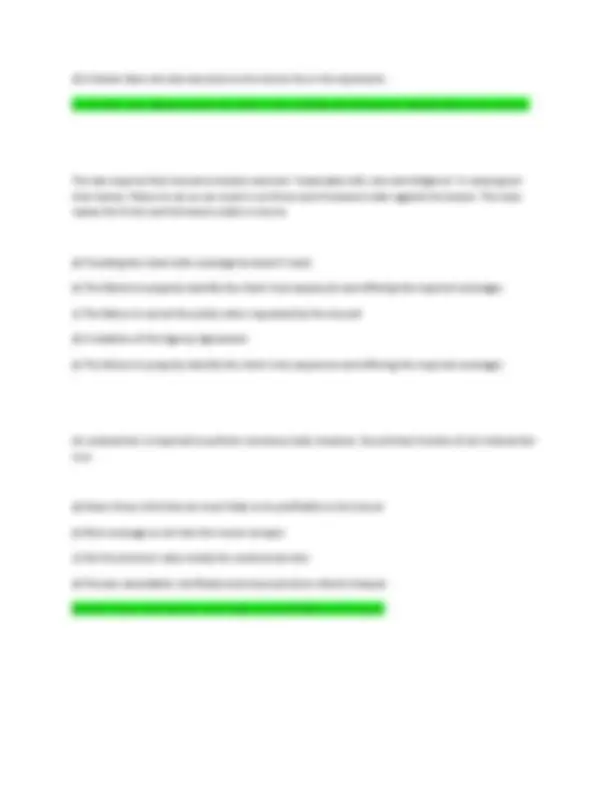
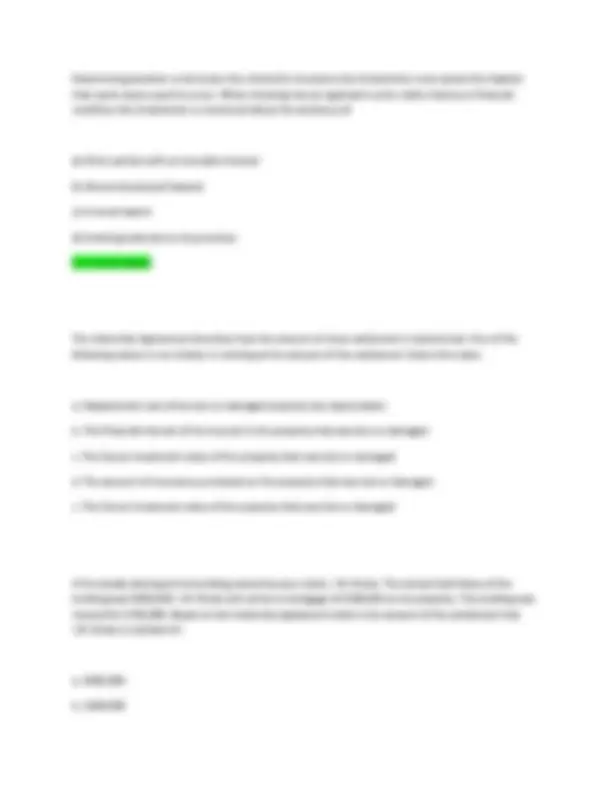
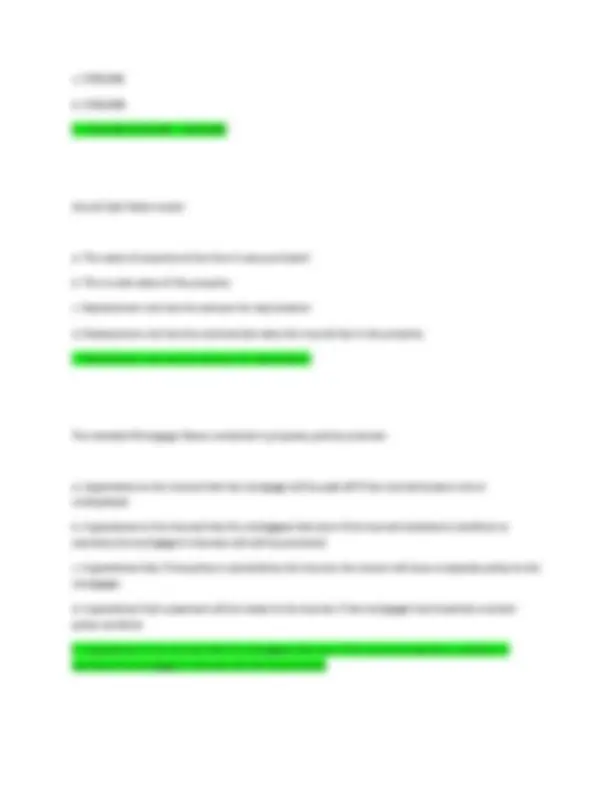
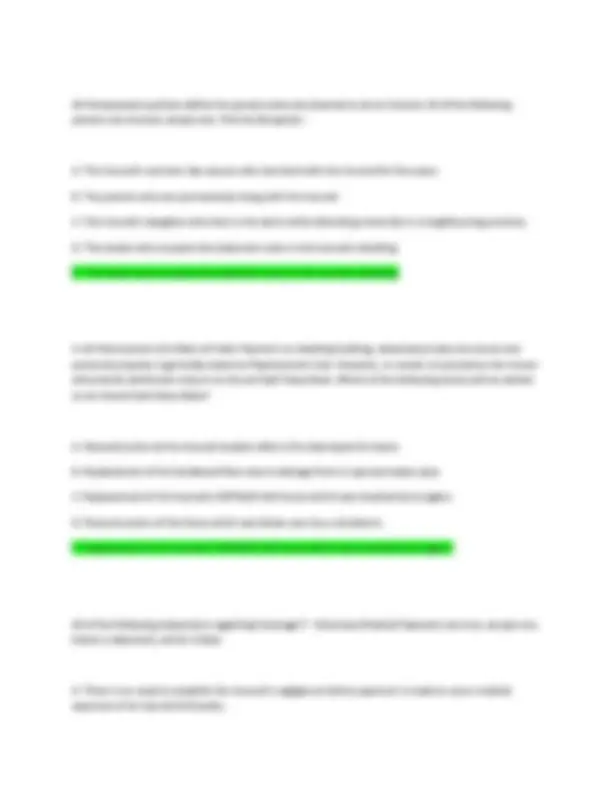
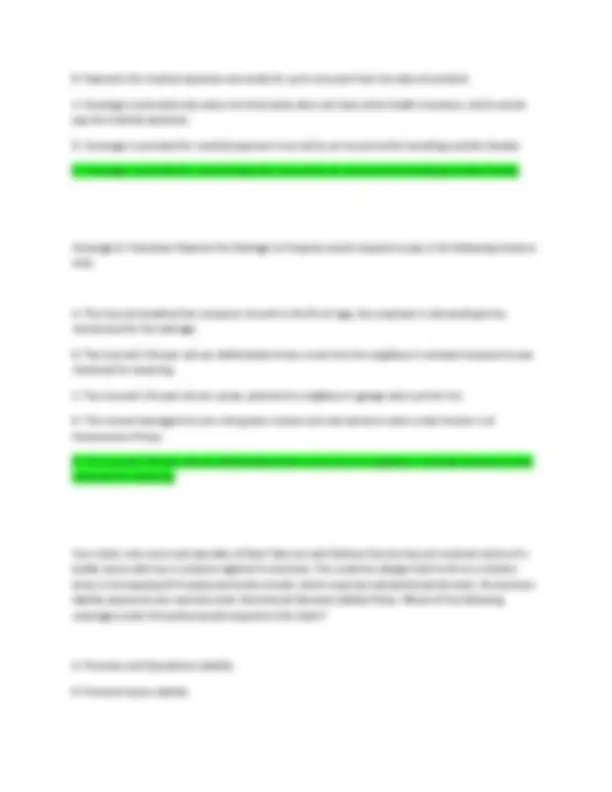
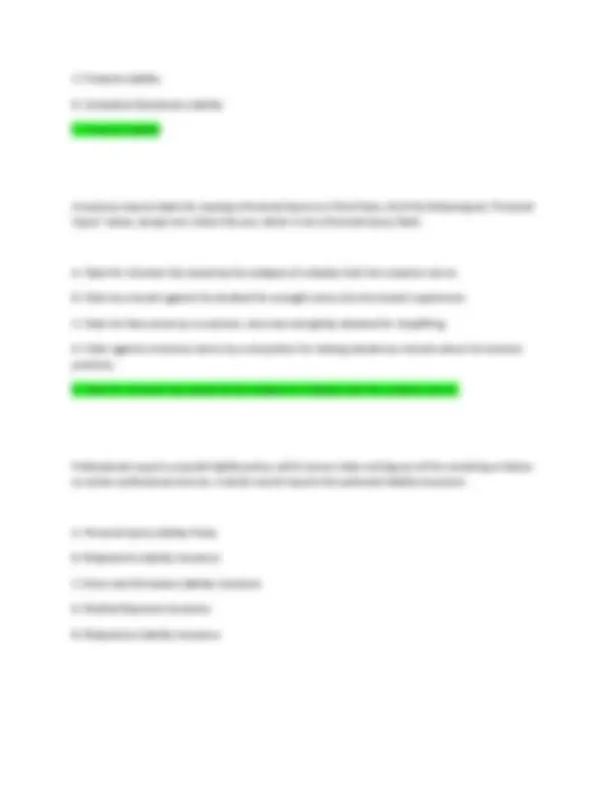
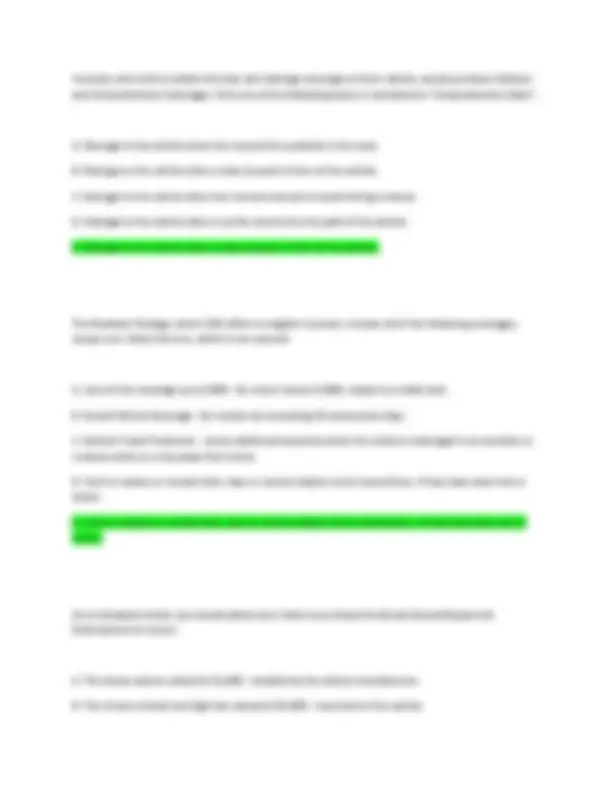
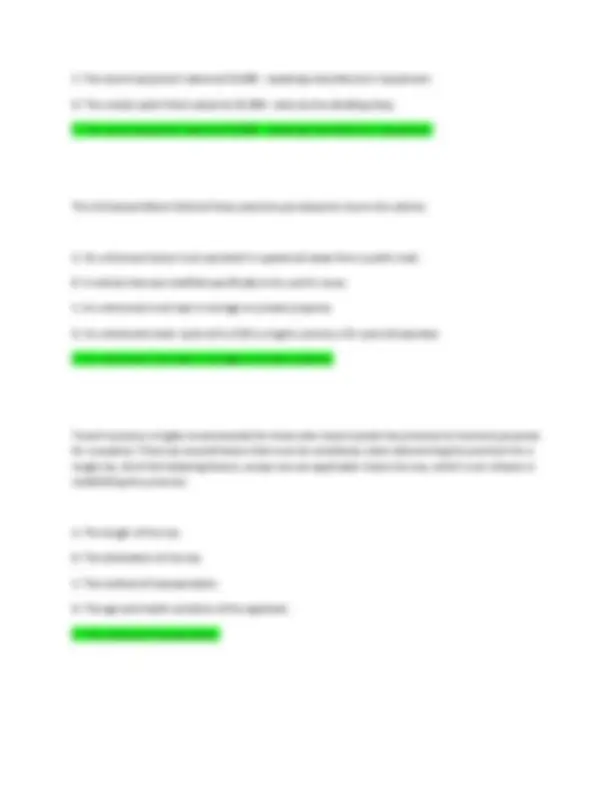
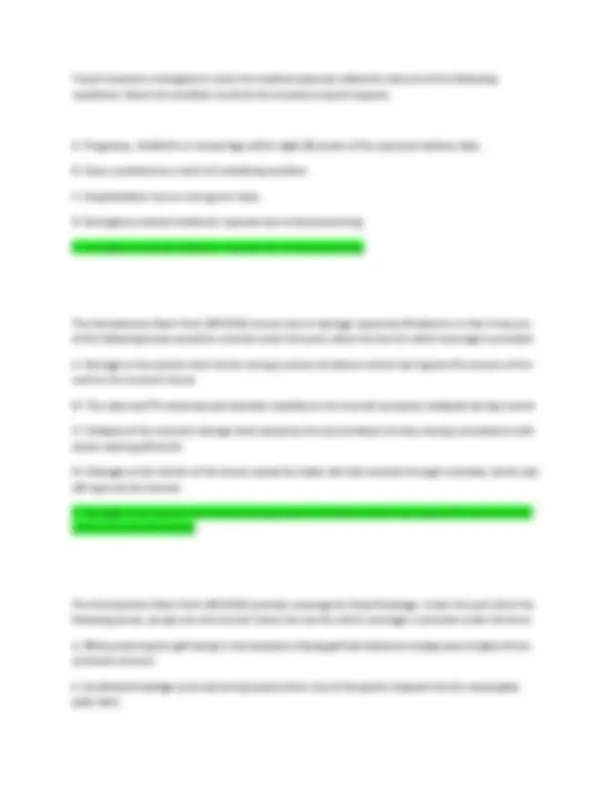
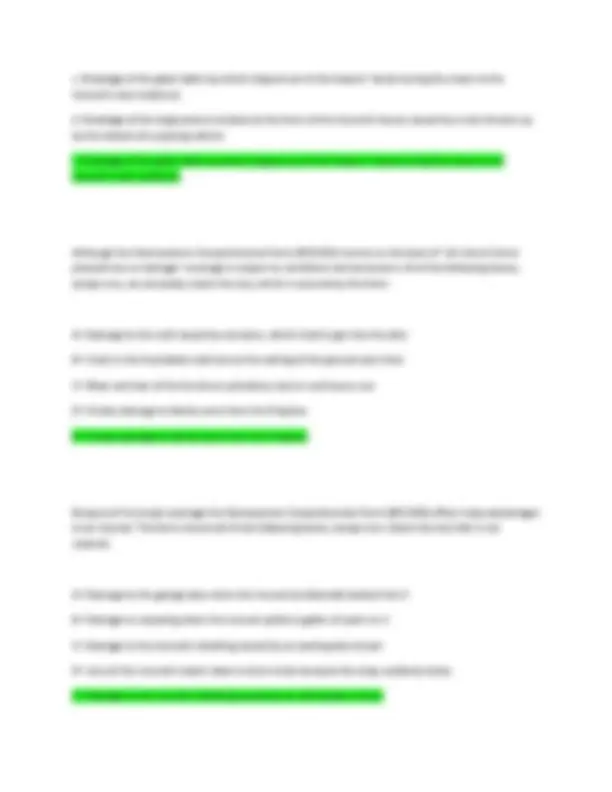
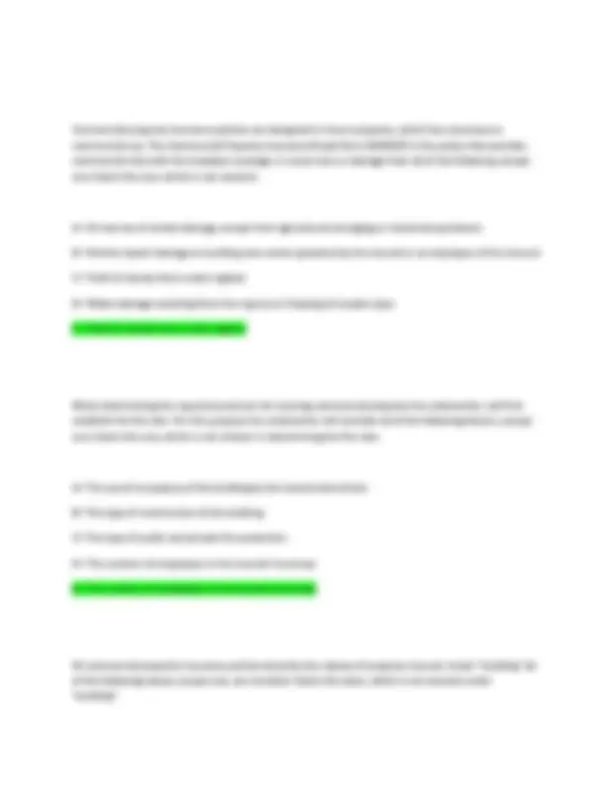
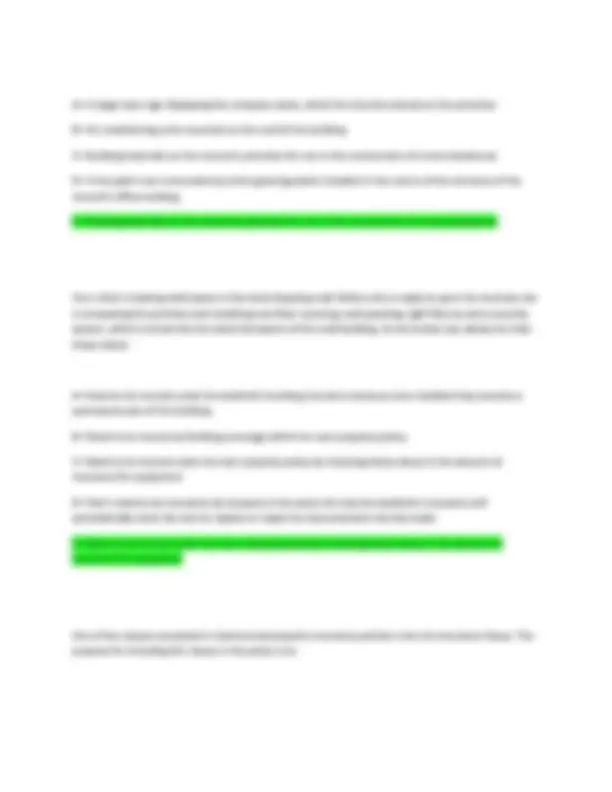
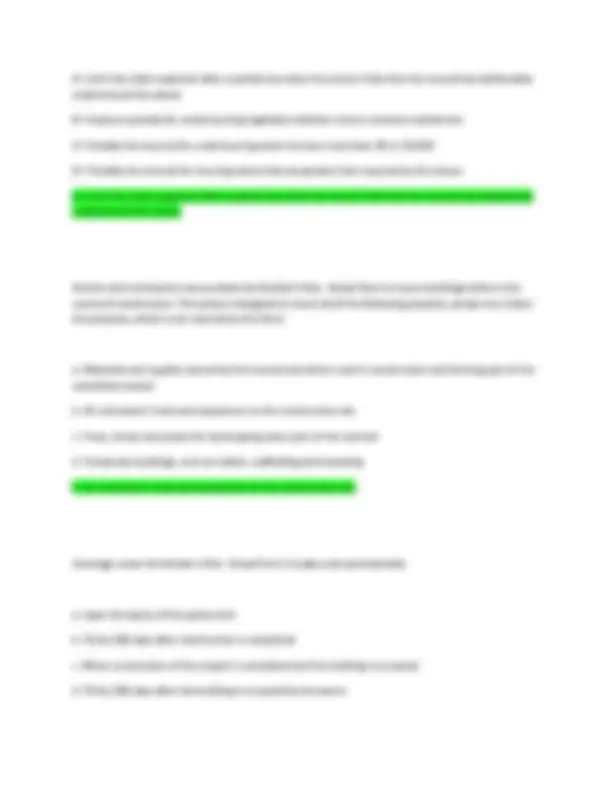
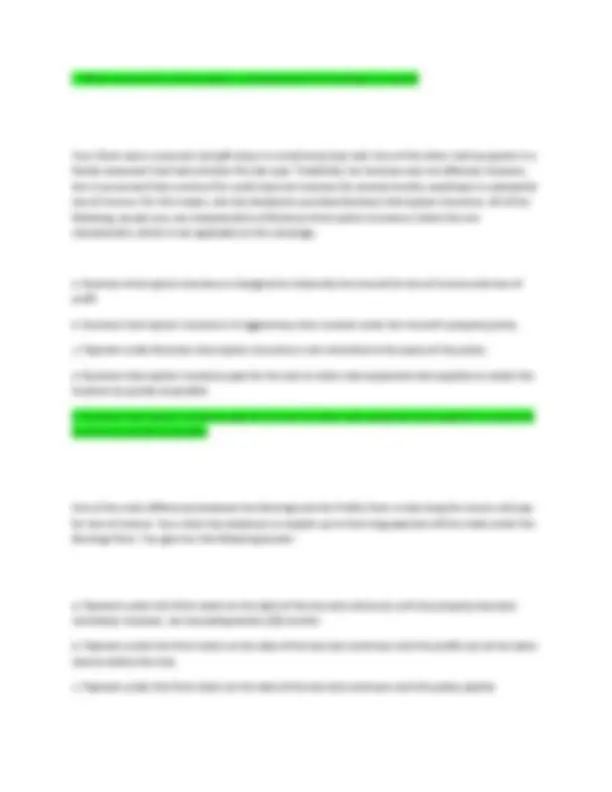
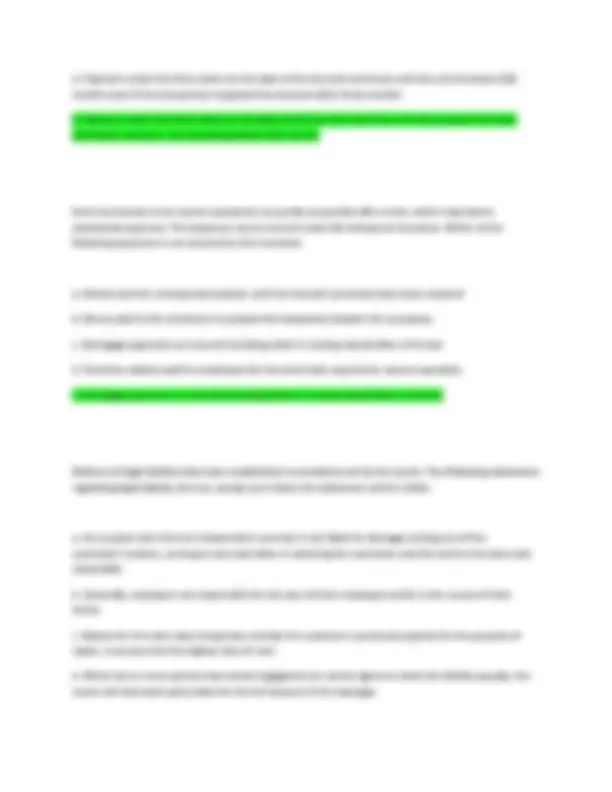
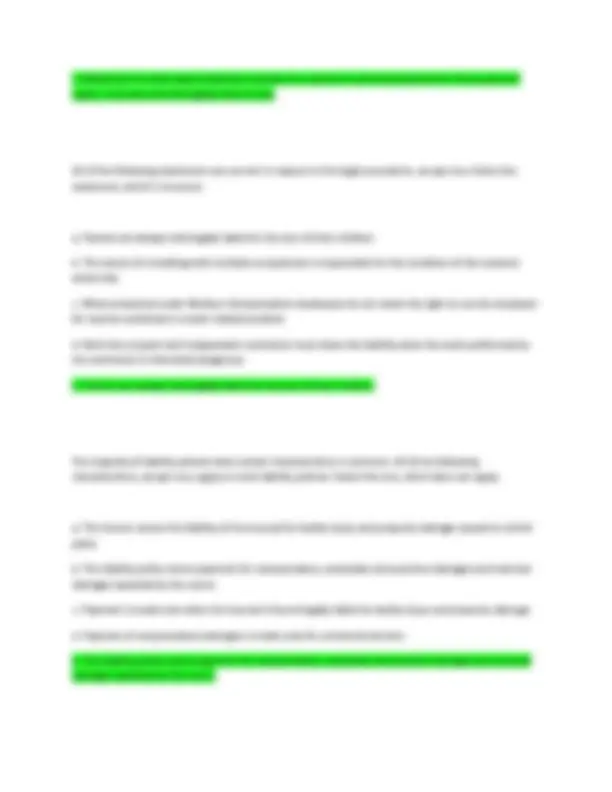
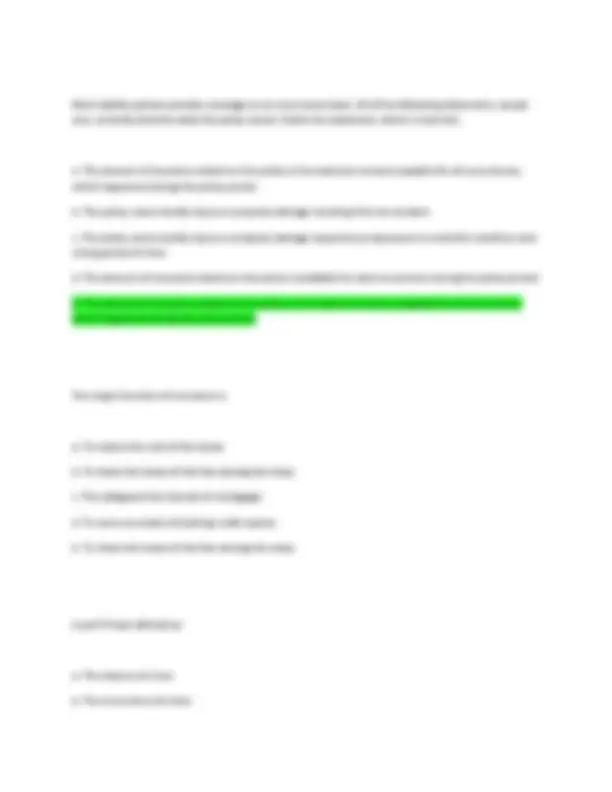
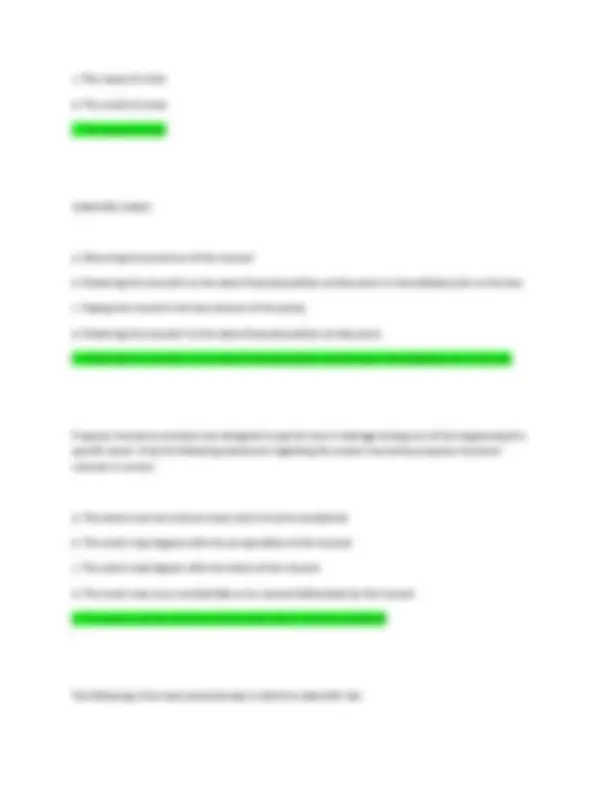
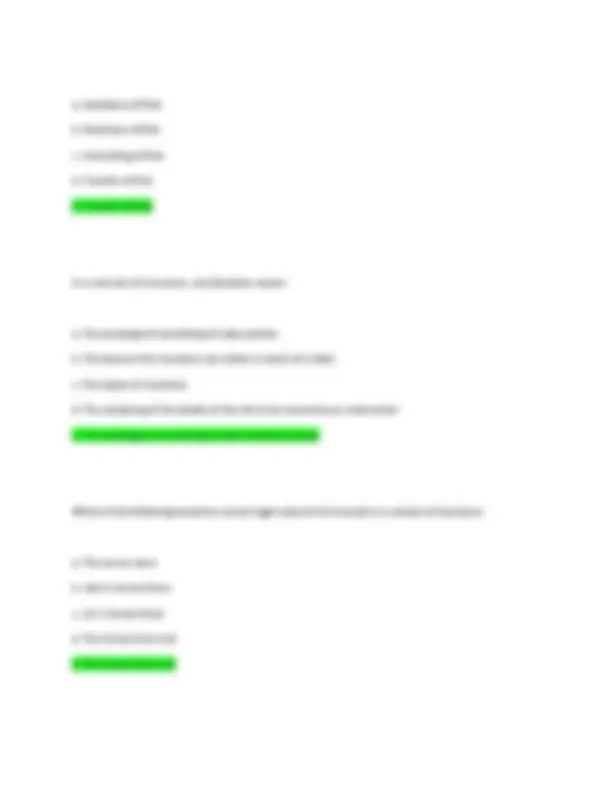
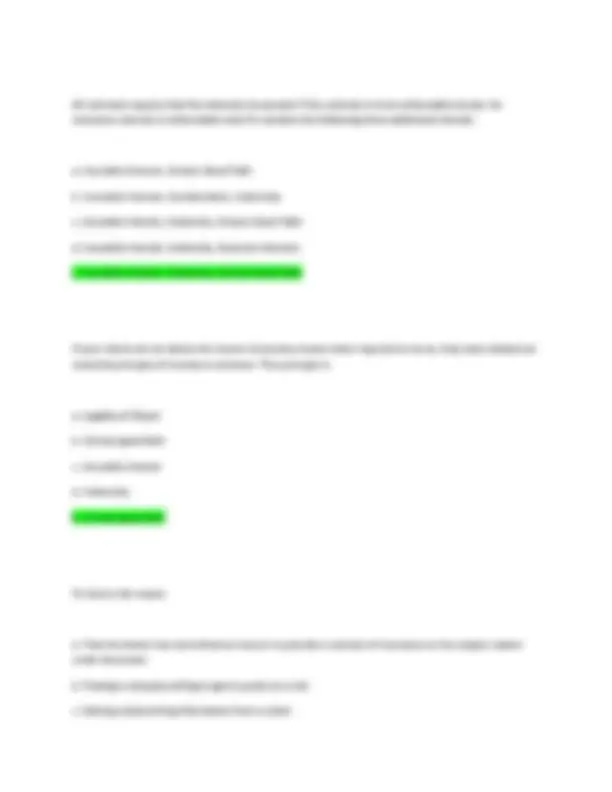
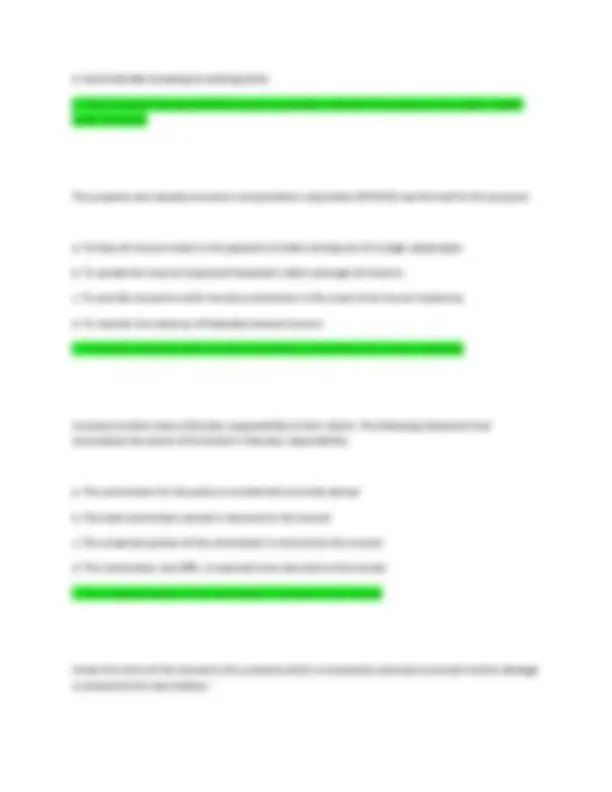
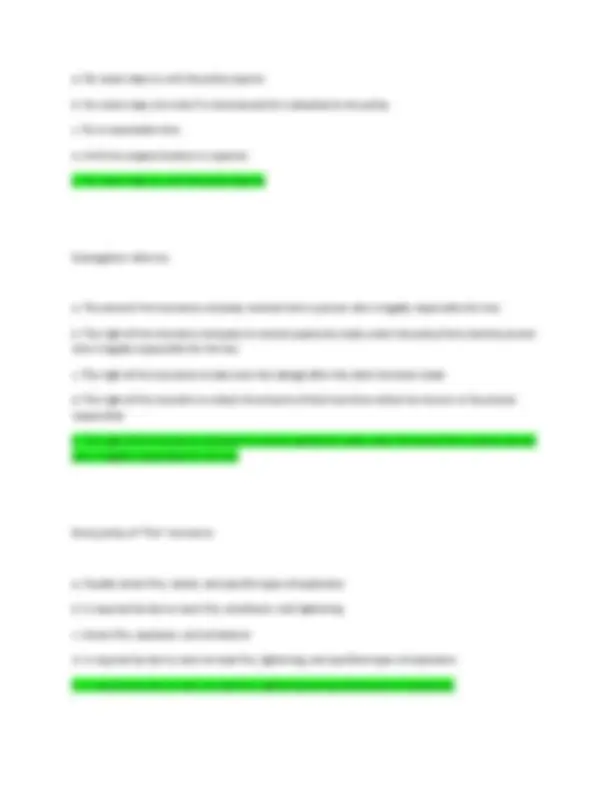
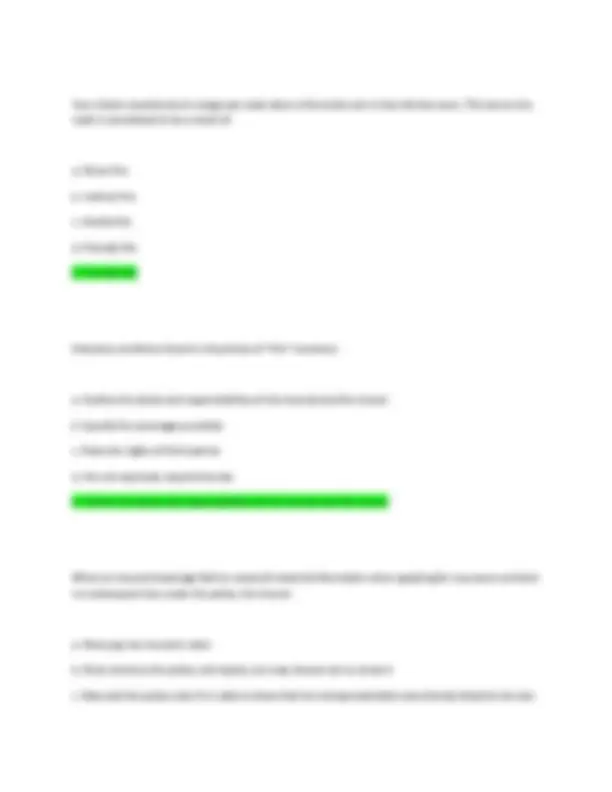
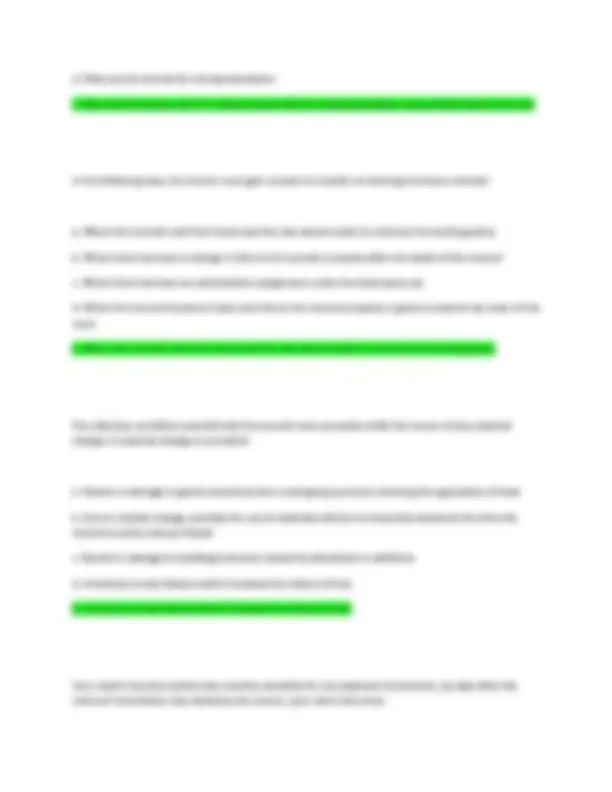
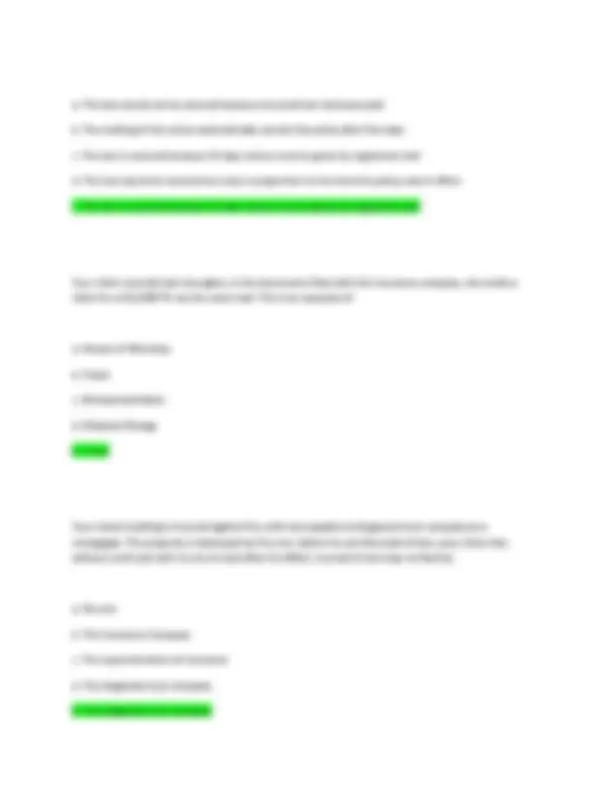
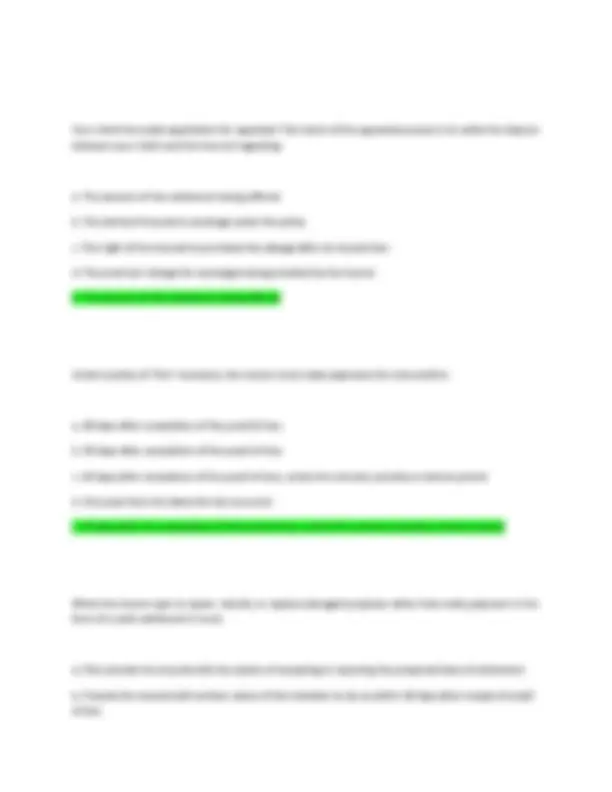
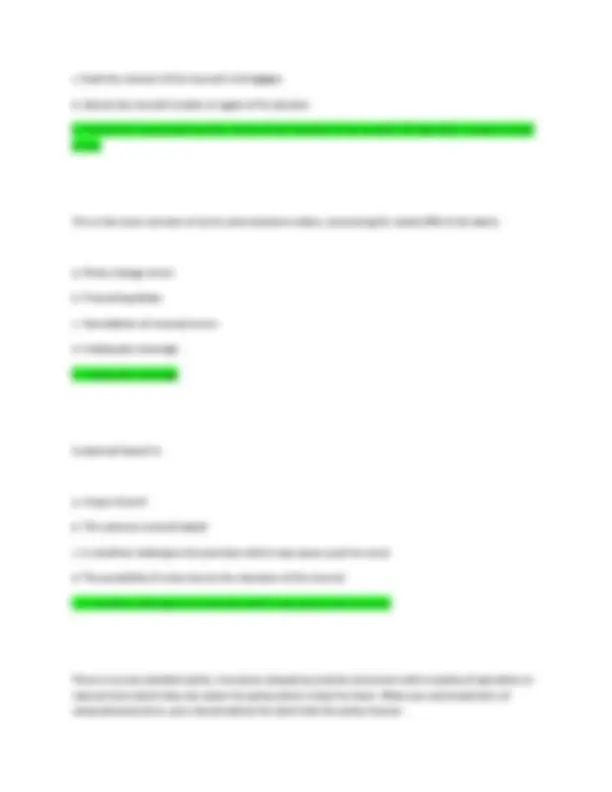
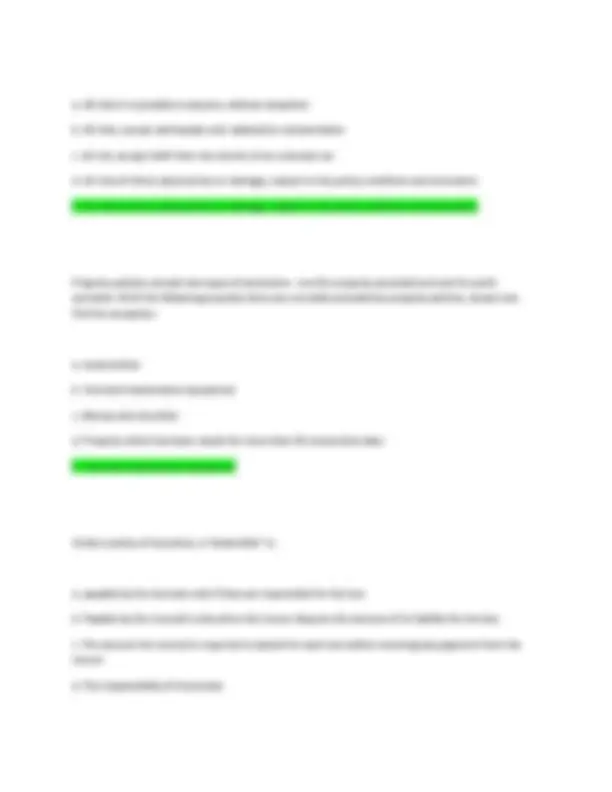
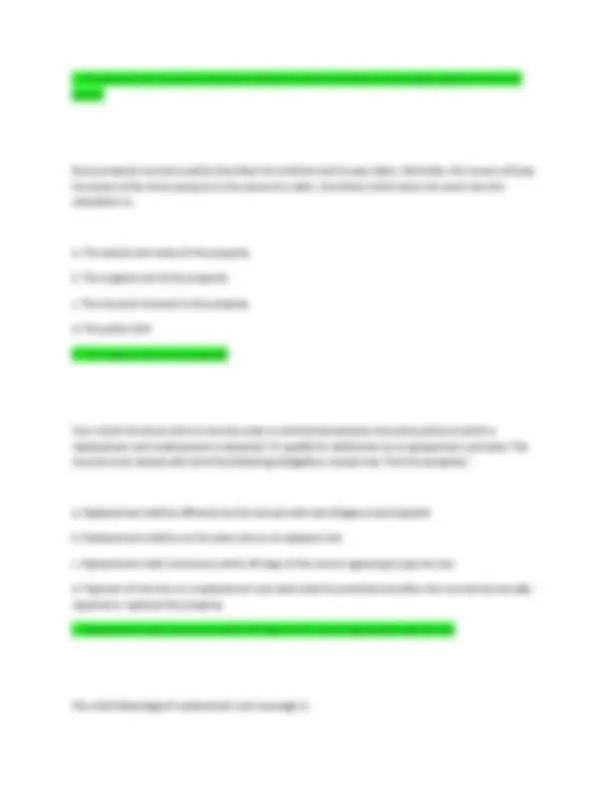
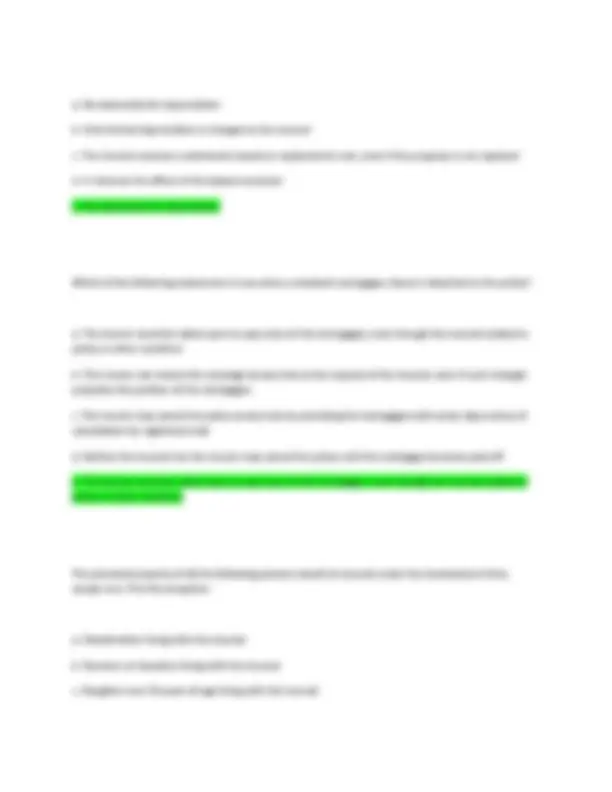
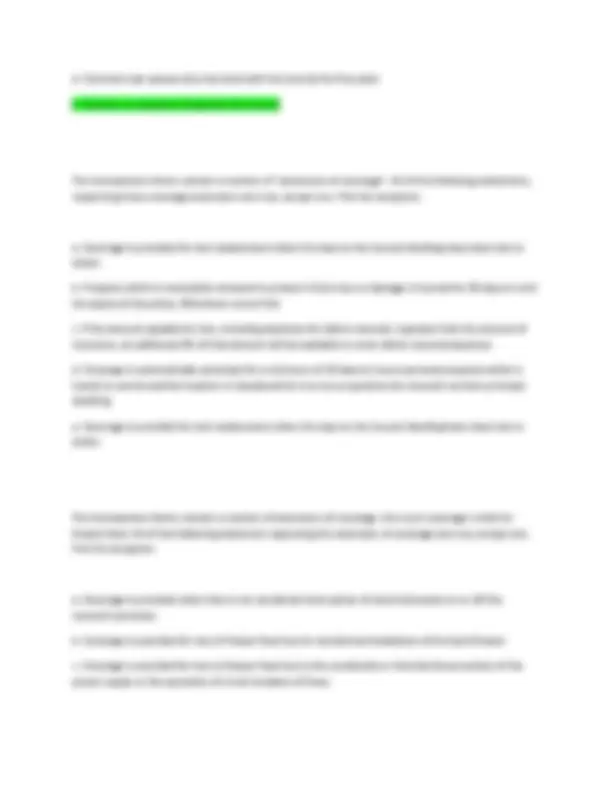
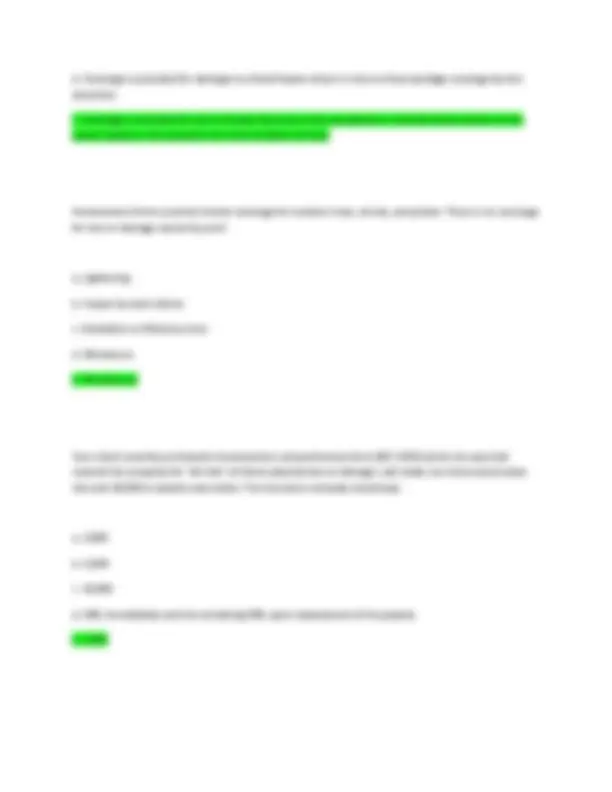
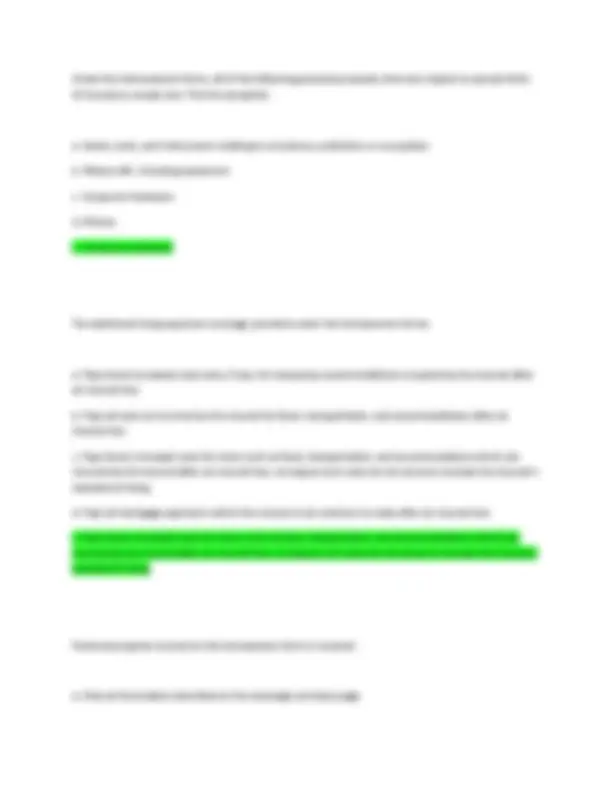
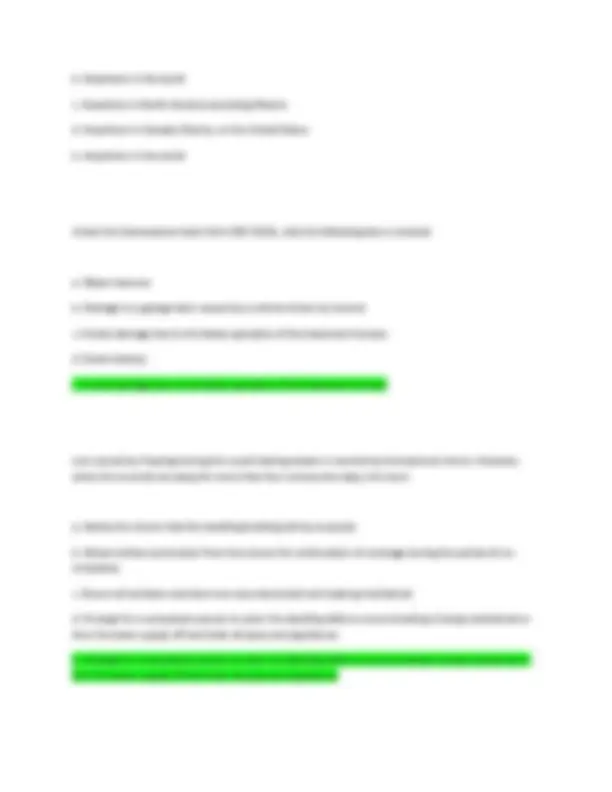
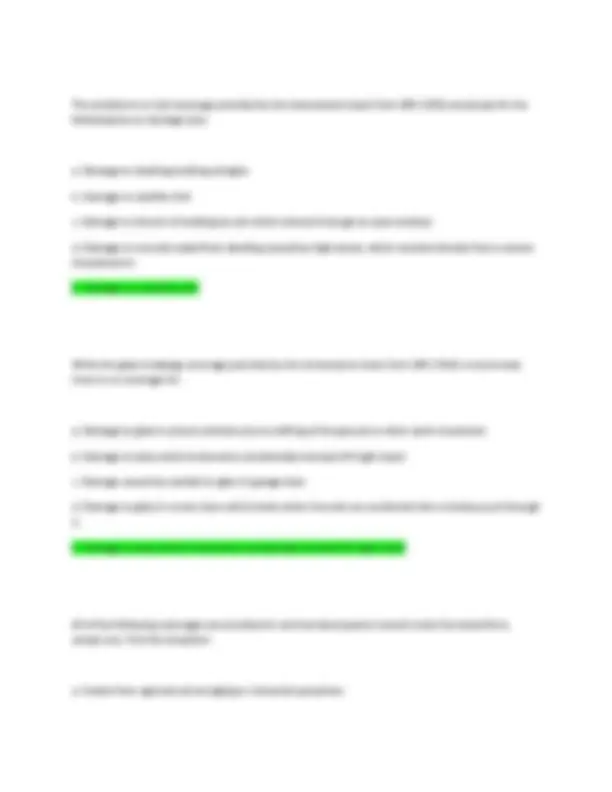
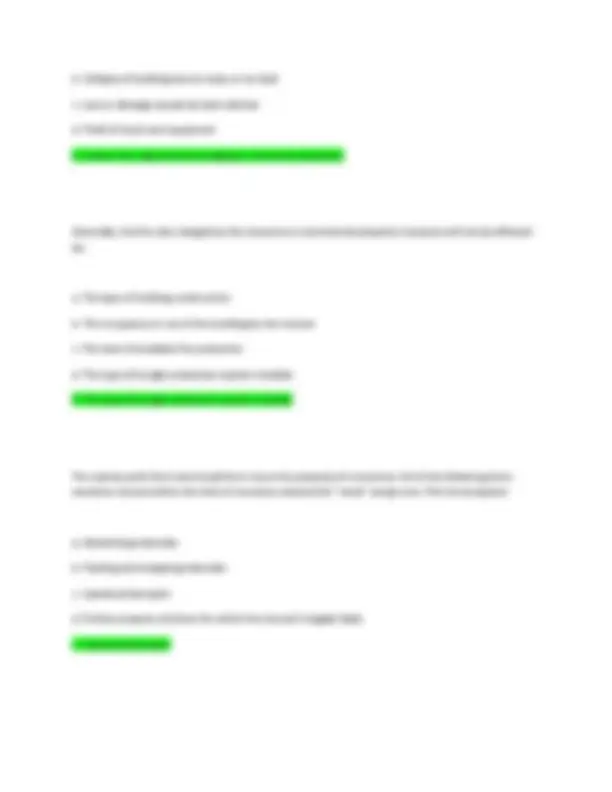
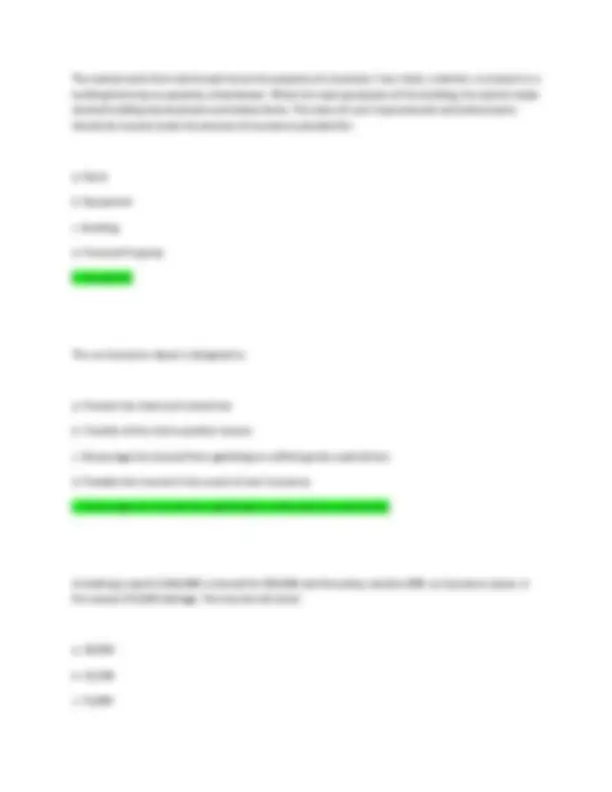
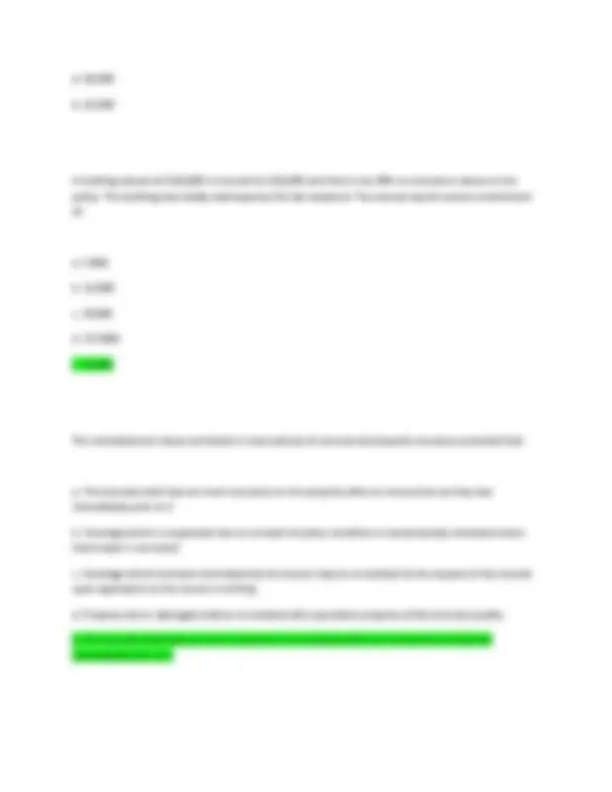
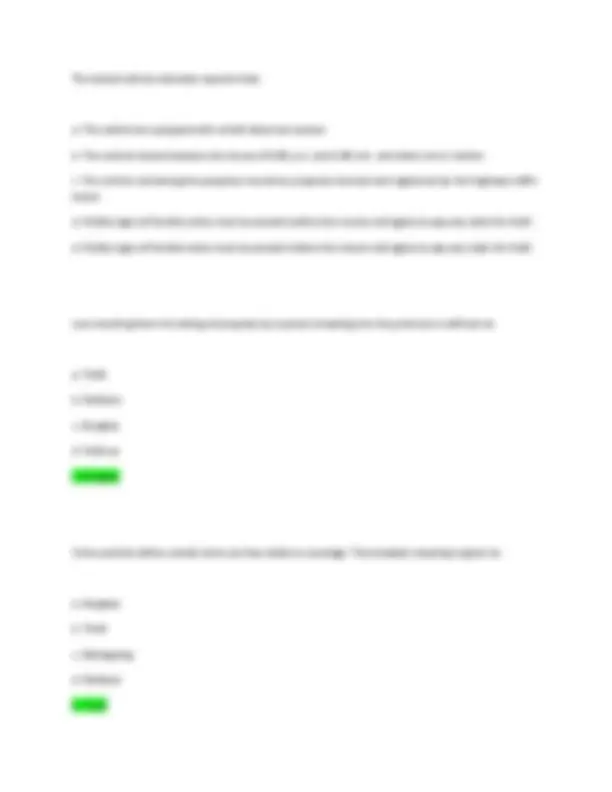
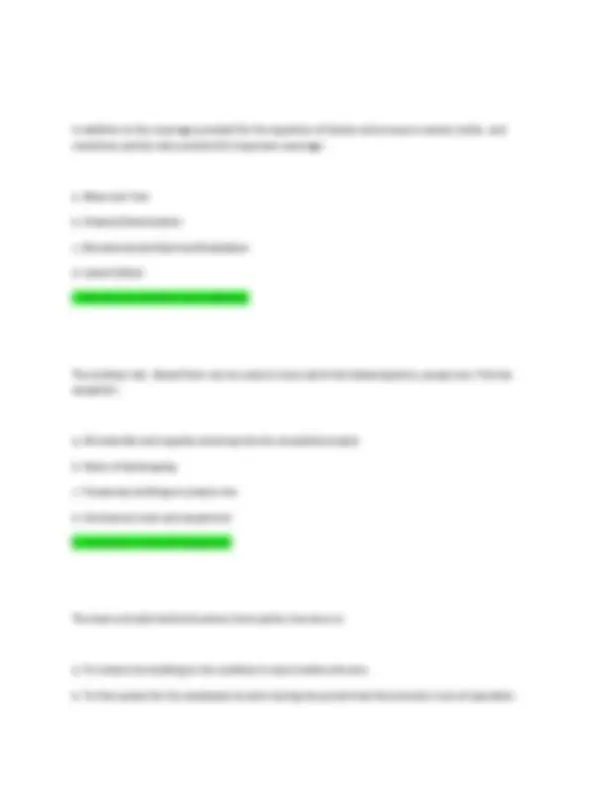
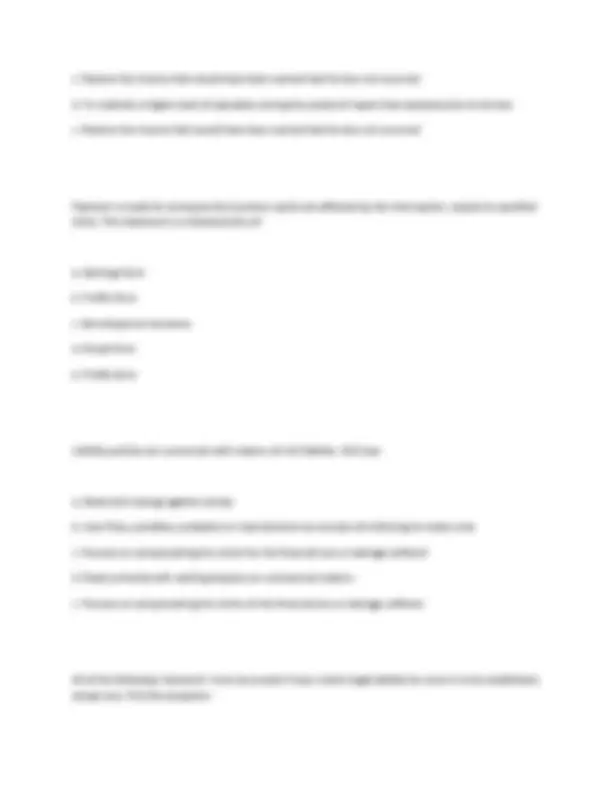
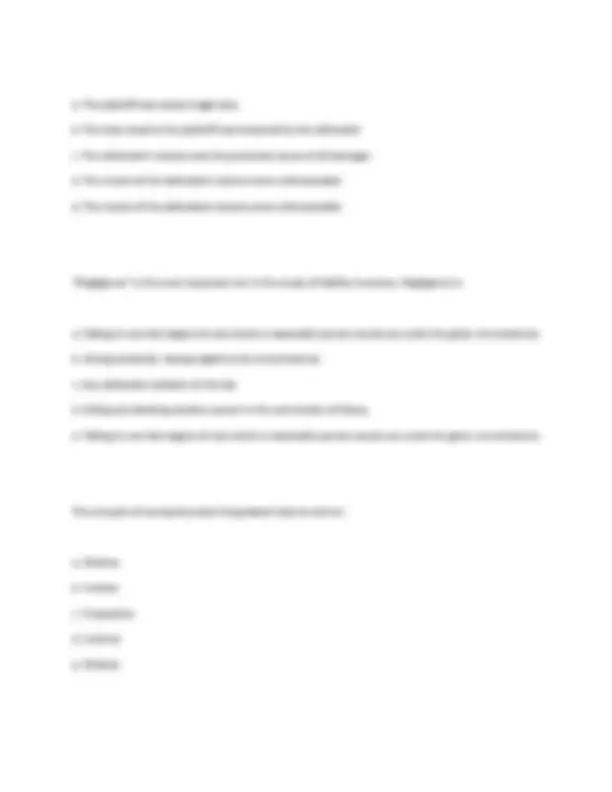
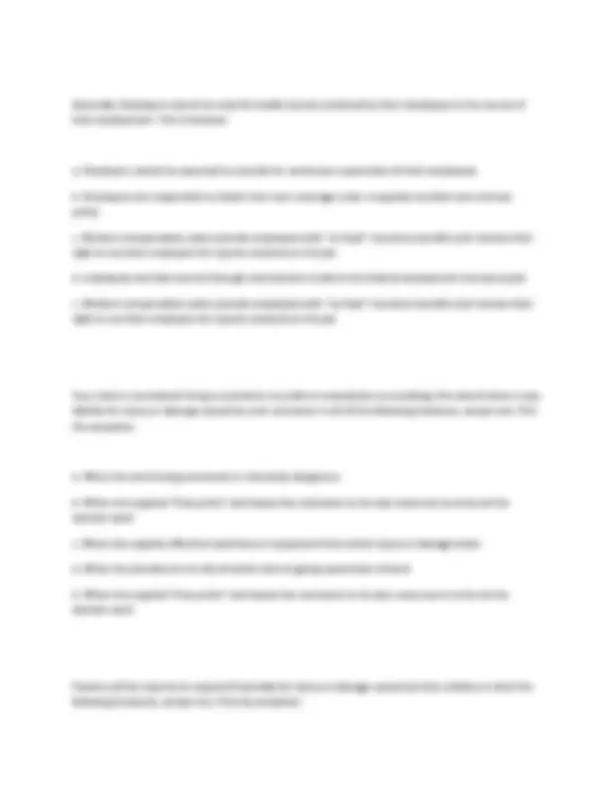
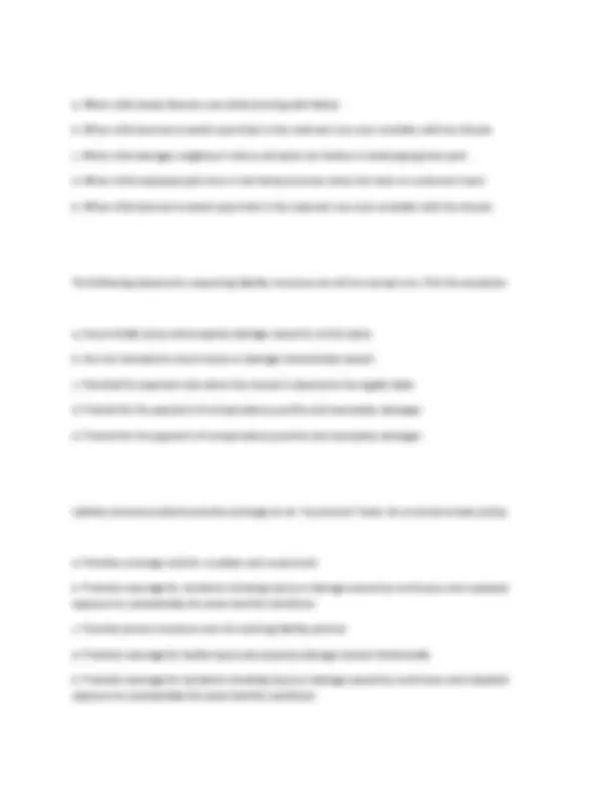
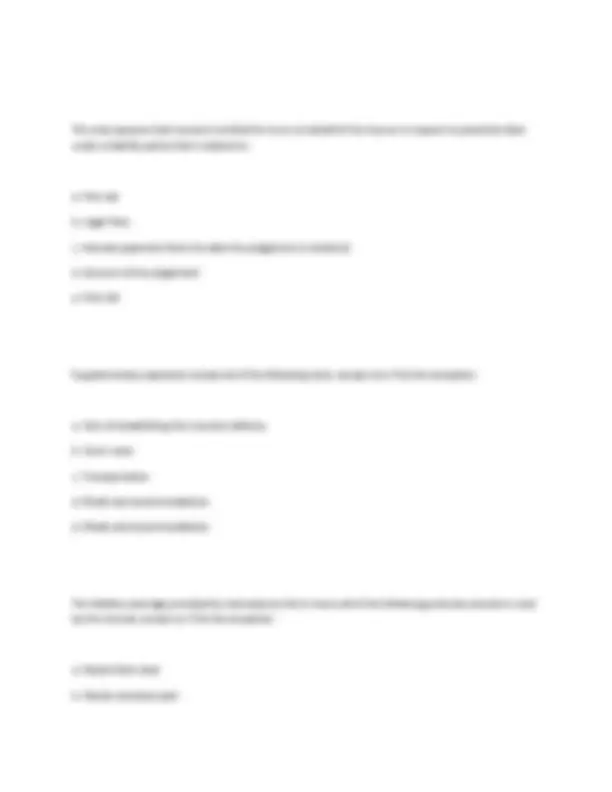
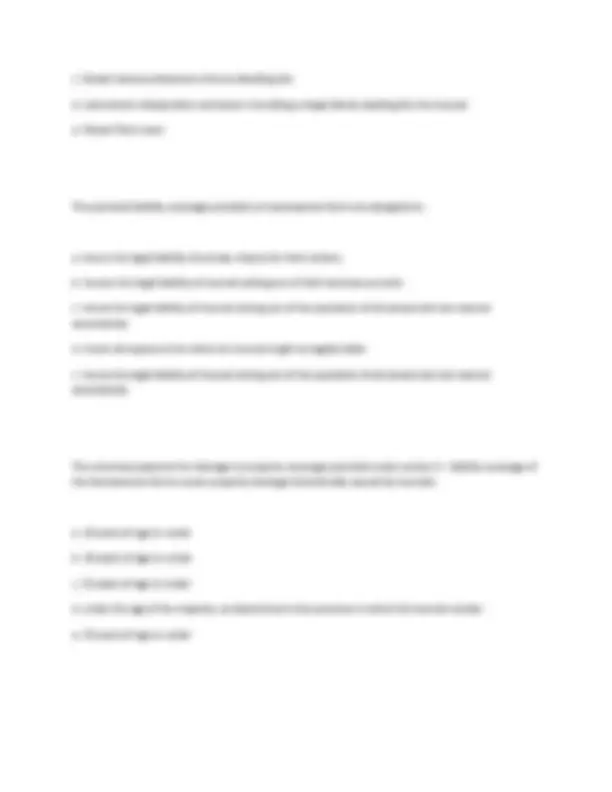
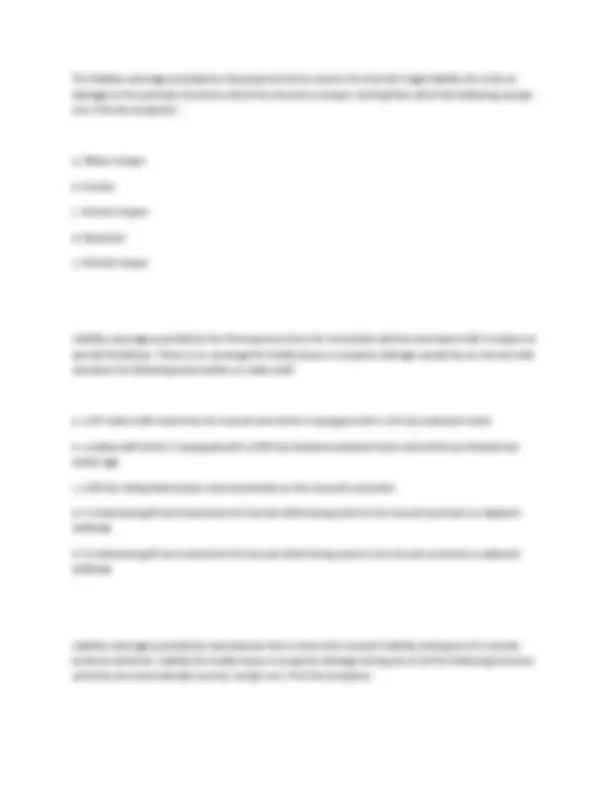
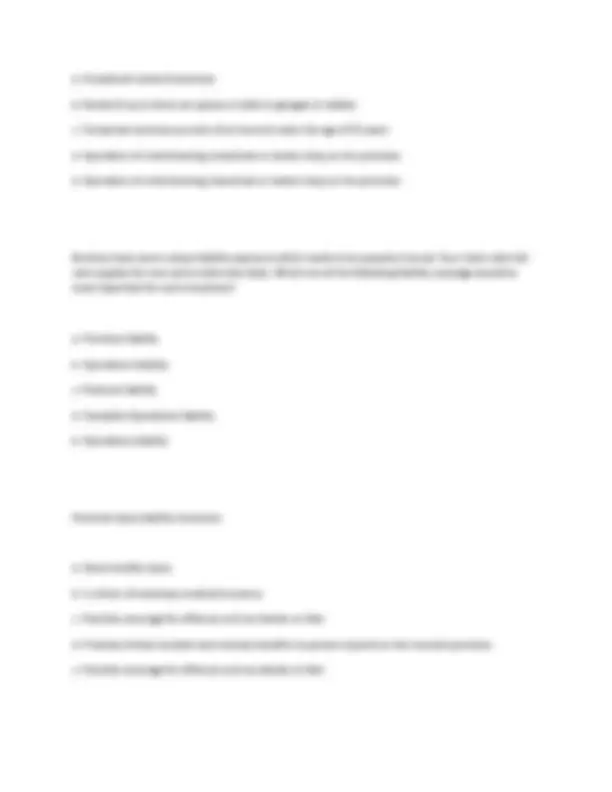
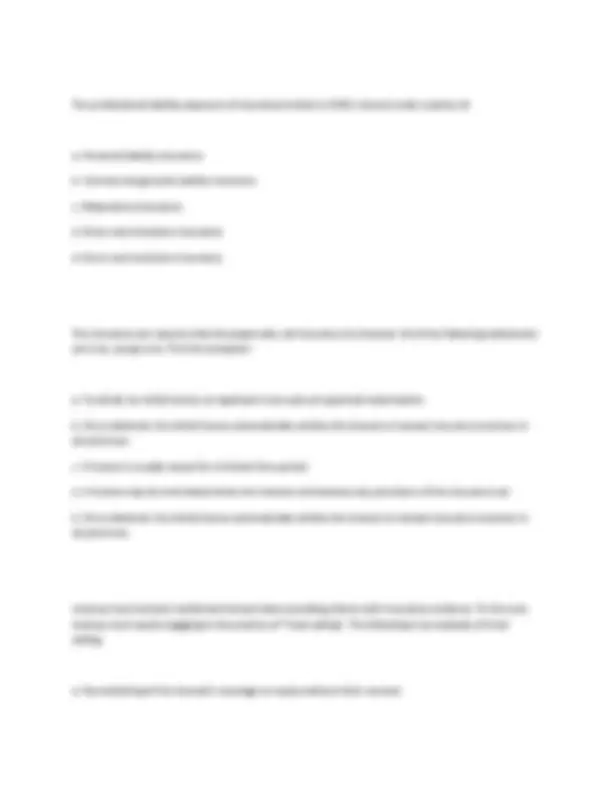
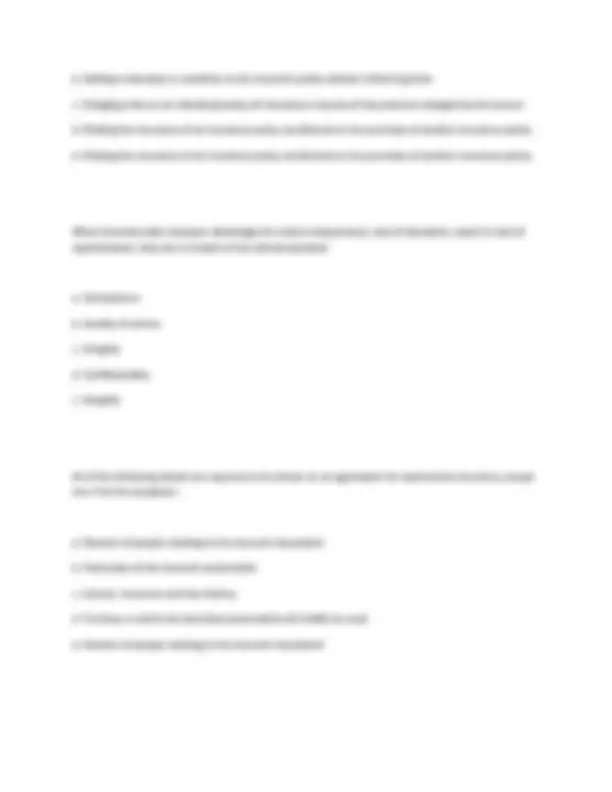
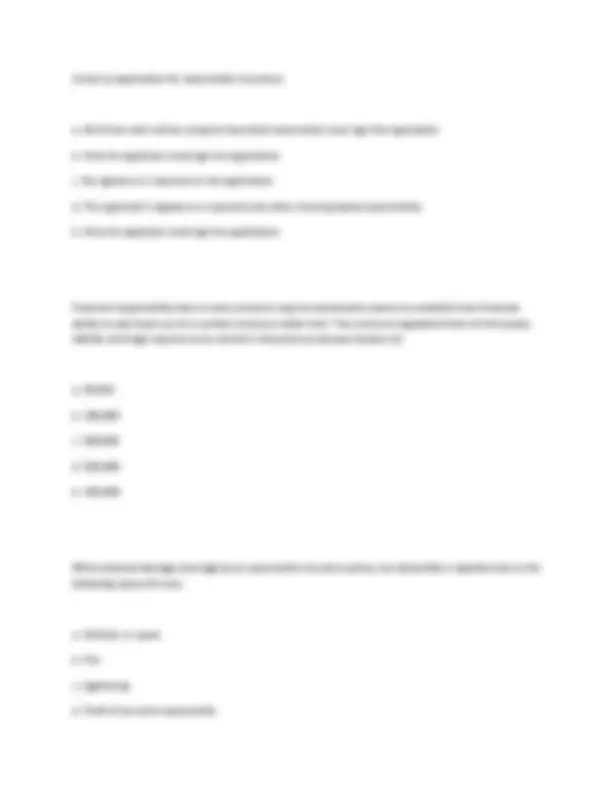
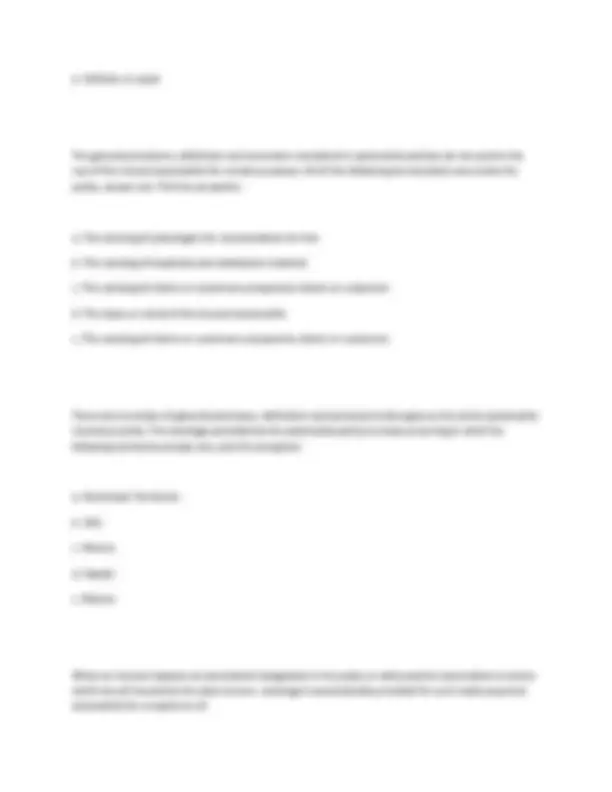
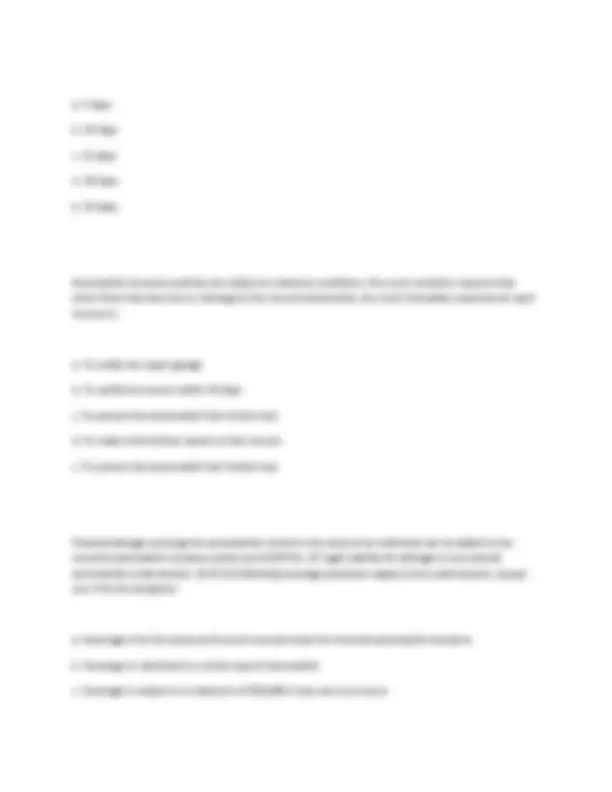
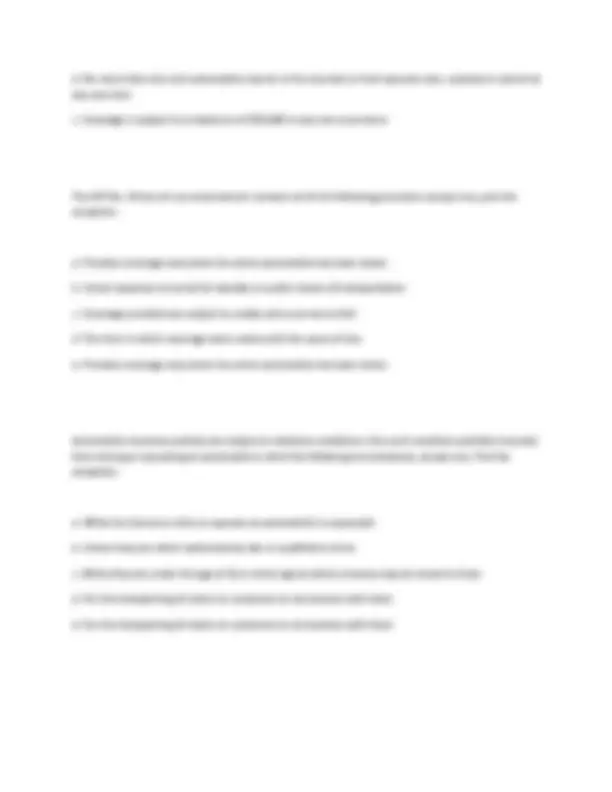
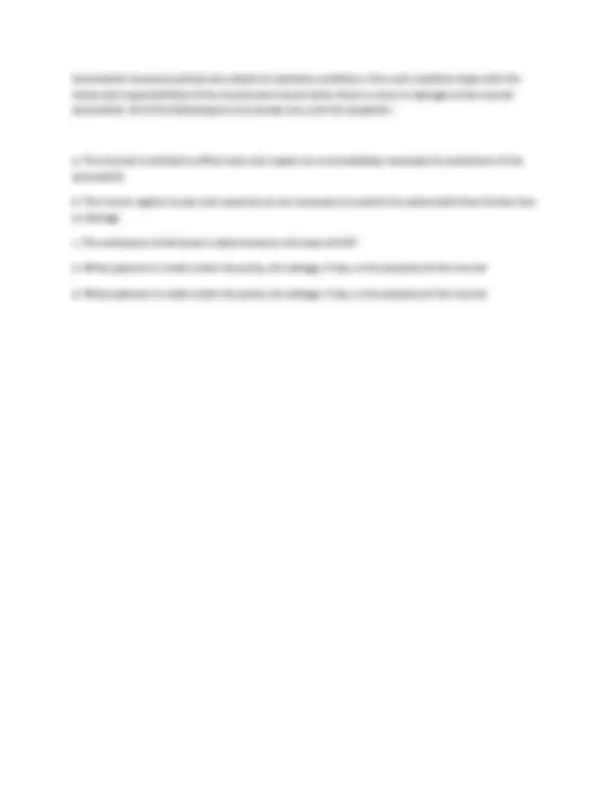


Study with the several resources on Docsity

Earn points by helping other students or get them with a premium plan


Prepare for your exams
Study with the several resources on Docsity

Earn points to download
Earn points by helping other students or get them with a premium plan
Community
Ask the community for help and clear up your study doubts
Discover the best universities in your country according to Docsity users
Free resources
Download our free guides on studying techniques, anxiety management strategies, and thesis advice from Docsity tutors
Fundamentals to Insurance Final Exam 2025-2026 WITH COMPLETE QUESTIONS AND CORRECTLY WELL DEFINED ANSWERS WITH RATIONALES 100% GUARANTEED PASS EXAM 2025- 2026/ Fundamentals to Insurance Final Exam
Typology: Exams
1 / 86

This page cannot be seen from the preview
Don't miss anything!















































































Insurance plays an important role in managing financial risk. The main purpose of Insurance is to: A. Enable the consumer to obtain loan or mortgage. B. Provide employment and investment capital. C. Allow spread of risk. D. Reduce losses through loss prevention and loss reduction. C. Allow spread of risk. When the insurer terminates an insurance policy, ALL of the following conditions apply, EXCEPT one. Pick the exception: A. The insured is entitled to 15 days' written notice of termination sent by registered mail of 5 days' written notice personally delivered. B. The refund due to the insured shall be calculated on a short rate basis. C. Unless otherwise stated, the refund shall accompany the notice of termination. D. The refund shall be in the form of money, postal or express company money order or cheque payable at par. B. The refund due to the insured shall be calculated on a short rate basis.
The major function of insurance is to: A. Reduce the cost of losses. B. Share the losses of the few among many. C. Safeguard the interest of the mortgagees D. Serve as the basis of the existing credit system. B. Share the losses of the few among many. Under the policy of "fire" insurance, the insurer would be obligated to pay the following loss only: A. Fire damage caused to appliance following a sudden power surge. B. Fire damage to insured buildings occurring during a rebellion. C. Damage to insured property due to radioactive contamination. D. Loss of property caused by a process involving the application of heat. B. Fire damage to insured buildings occurring during a rebellion. Generally, all of the following, except one, are seen to be "incompetent" or lacking the legal capacity to contract. Pick the exception: A. A corporation. B. A child. C. A trade name. D. A senile person. A. A corporation.
A. Permitted to be made by the insurance broker as long as it is in favour of the insured. B. Not binding, unless it is in writing and under the signature of a person authorized by the insurer. C. Valid only when signed by both the insurer and the insured. D. Bonding when even provided orally. B. Not binding, unless it is in writing and under the signature of a person authorized by the insurer. One of the elements that determines whether a contact is legally enforceable or not is the "legal capacity of the parties". In all of the following contracts, except one, are the parties considered to have "legal capacity". Select the one that does not meet this element. A. An insurance contract issued in the name of Marry Poppin d.b.a. Little People Day Care Centre. B. A lease agreement naming the tenant as the "No Risk Denied Insurance Corporation". C. A building contract showing the General Contractor as Bricks and Mortar Inc. D. An invoice for merchandise shipped to the order of Mandy's Souvenir and Gift Shop. D. An invoice for merchandise shipped to the order of Mandy's Souvenir and Gift Shop. Risk selection is based on the Underwriter's assessment of the hazards pertaining to the risk that has been submitted for insurance. An underwriter must determine whether or not there is a potential Moral Hazard. The following does not apply as a condition indicating the presence of a Moral Hazard: A. The moral character of the applicant for insurance. B. The financial condition of the applicant for insurance. C. The physical condition of the premises which may cause a loss to occur. D. The indifference to loss of the applicant for insurance.
C. The physical condition of the premises which may cause a loss to occur. A warranty is a: A. Promise by the broker to remit premiums to the insurer in accordance with the terms stated in the Agency Agreement. B. Guarantee of insureds that certain facts are truly as they are represented to be and that they will remain so. C. Piece of paper similar to an Endorsement which maked changes to the policy. D. Promise by the insurer to make payment of all claims submitted to it within a 21 day period. B. Guarantee of insureds that certain facts are truly as they are represented to be and that they will remain so. All Homeowners Policies contain the section "Extensions of Coverage". All of the following losses are covered under this section, except one. Pick the exception: A. Damage to personal property during transportation to the insured's new principal residence located in Sydney, Nova Scotia, which is to be occupied by the insured within the next 10 days. B. The cost of repair the "tear out" damage to the insured's driveway that was necessarily caused to replace the ruptured water main. C. The cost to replace the insured's freezer food that was spoiled as a result of a power failure caused by lightening. D. Loss of the insured's indoor trees and plants due to exposure to extreme temperatures after a severe storm damaged part of the roof. B. The cost of repair the "tear out" damage to the insured's driveway that was necessarily caused to replace the ruptured water main.
A. Dwelling building shingles. B. Satellite dish. C. Interior of building by rain which entered through an open window. D. Insured's waterfront dwelling caused by high waves which resulted directly from a severe windstorm. A. Dwelling building shingles. The following loss is insured under the Homeowners' Basic Form (IBC 1151): A. Water Hammer B. Rupture of a heating, plumbing or air conditioning system. C. Smoke from a fireplace. D. Death of a family pet by vehicle impact. B. Rupture of a heating, plumbing or air conditioning system. Your client is the owner of a condominium and is currently covered under a Condominium Unit Owner's Package (IBC 1165), which includes Loss Assessment Coverage. She doesn't believe that this coverage is important. You advise her that the Loss Assessment Coverage would respond to all the following claims, except one. Pick the EXCEPTION: A. The portion of the cost to replace personal property damaged by fire because of an inadequate limit under her own policy. B. Payment to cover a portion of a water damage loss to common area, because of a high deductible under the condominium corporation's policy. C. Payment for a loss to collectively owned property, which was not covered under the condominium corporation's policy.
D. Assessment to cover a portion of an insured loss to the building due to the co-insurance penalty imposed on the corporation by its insurer. A. The portion of the cost to replace personal property damaged by fire because of an inadequate limit under her own policy. The loss of money due to actual destruction, disappearance or wrongful abstraction would be property insured under the following policy: A. Burglary Policy B. Robbery Policy C. Interior Messenger and Paymaster Robbery (Hold-Up) Policy. D. Money and Securities (Broad Form) D. Money and Securities (Broad Form) The installation Floater is designed for contractors that specialize in the installation of machinery and equipment. The following property is not covered under this floater: A. Property in warehouse on the insured's premises. B. Property while in transit to the job site. C. Property awaiting installation at the job site. D. Property while being installed at the job site. A. Property in warehouse on the insured's premises.
B. At the premises of another business for repairs or storage. One of the tasks performed by a commercial underwriter is to establishing the rate to be charged for covering the peril of fire. The "fire rate" is determined by a number of different factors. All of the following factors, except one, influence the rate charged by the insurer. Pick the exception: A. The level of public fire protection, i.e. distance to fire hydrants and fire hall. B. The location of the risk, including distance to another commercial building and occupancies. C. The number of years the applicant for insurance has been in business. D. The claims history of the applicant over the past 3-5 years. C. The number of years the applicant for insurance has been in business. Which of the following statements is correct in connection with an 80% co-insurance clause? A. The amount payable is restricted to less than 80% of the actual cash value of the property. B. The insured can collect only 80% of any loss. C. If the amount of insurance is less than 80% of the value of the property, payment may be less than the actual loss. D. The amount of insurance carried, must, by law, be not less than 80% of the value of the property. C. If the amount of insurance is less than 80% of the value of the property, payment may be less than the actual loss. Insureds generally will receive a rate credit when property protection systems are installed on the premises. As a condition of coverage, the insured must notify the insurer immediately when certain conditions exist. Which is the following statements is not true in respect of this policy condition:
A. The insureds shall notify the insurer of any interruptions to such system(s) of which they are aware. B. The insureds shall advise the insurer of the existence of any municipal by-law or ordinance related to such system(s) C. The insureds shall advise the insurer when any contract providing monitoring or maintenance services has been cancelled. D. The insureds shall advise the insurer when they have been provided with notification of the suspension of police services in response to any such system(s) B. The insureds shall advise the insurer of the existence of any municipal by-law or ordinance related to such system(s) According to the Canadian Legal System, the Insurance Act is: A. A part of the criminal code. B. A precedent established by common law. C. A part of the Civil Code. D. A statute law. D. A statute law. An insured' s liability for sickness, disease or death caused to third parties is insured by liability policies under the coverages provided for: A. Personal Liability B. Bodily Injury C. Medical Payments
A. Roof damage caused by falling object which strikes the dwelling building. B. Damage caused to the dwelling building by an automobile driven by a neighbour. C. Wind damage to building siding. D. Damage caused by vandalism to a dwelling building in the course of construction. D. Damage caused by vandalism to a dwelling building in the course of construction. The following claim would be insured by the Homeowners' Basic Form (IBC 1151) under the peril of theft: A. Theft of insured's registered black Labrador dog. B. Damage to door and lock by persons attempting to break-in to the insured's dwelling. C. Theft to personal property from a seasonal dwelling owned by the insured and which had not been occupied by the insured for almost two months. D. Theft of building materials from site of insured's new dwelling prior to its completion. B. Damage to door and lock by persons attempting to break-in to the insured's dwelling. Under the Homeowners' Basic Form (IBC 1151) only the following loss is covered: A. Water Hammer. B. Damage to a garage door caused by a vehicle driven by the insured. C. Smoke damage due to the faulty operation of the basement furnace. D. Sewer back-up. C. Smoke damage due to the faulty operation of the basement furnace.
The emergency removal coverage provided by the Mobile Home Insurance Form insures all of the following, except one. Pick the exception. A. Cost to disconnect water services. B. Cost to disconnect power services. C. Towing or transporting costs. D. Cost of repair damage caused during moving. D. Cost of repair damage caused during moving. The Additional Living Expense coverage provided under the Homeowners' Forms pays: A. Those increased costs only, if any, for temporary accommodations occupied by the insured after an insured loss. B. All costs as incurred by the insured for food, transportation, and accommodations after an insured loss. C. Those increased costs for items such as food, transportation, and accommodations which are incurred by the insured after an insured loss, so long as such costs do not serve to increase insured's standard of living. D. All mortgage payments which the insured must continue to make after an insured loss. C. Those increased costs for items such as food, transportation, and accommodations which are incurred by the insured after an insured loss, so long as such costs do not serve to increase insured's standard of living. The following loss would be insured by the Homeowners' Comprehensive Form (Form IBC 1155):
Your client operates a medical clinic near your office. She was recently sued by a customer who broke her back when the rail leading to a second floor office gave away, causing her to fall a distance of 5 meters to the floor below. This is an example of: a. a premises liability claim, b. a professional liability claim. c. A products liability claims d. a completed operations liability claims a. a premises liability claim, Businesses have some unique liability exposures which need to be properly insured. Your client sells toasters on a mail order basis. Which one of the following liability coverages would be most important for such a business? a. premises liability b. operations liability c. products liability d. completed operations c. products liability In general, liabilities policies are designed to respond (if a claim is made against an insured for bodily injury or property damage caused to a third party. All of the following would be considered "bodily injury" claims under liability insurance, except one. Pick the exception a. a friends child was bitten by the insured's dog and required stitches to close the wound b. a letter carrier died as a result of a fall on icy steps on the insured's premises
c. a neighbour is suffering from emotional trauma having witnesses the insured shooting a bear that has wandered into the insured's yard. d. a customer contracted food poisoning after eating improperly cooked meat in the insured's restaurant. c. a neighbour is suffering from emotional trauma having witnesses the insured shooting a bear that has wandered into the insured's yard. All of the following statement respecting voluntary medical payment coverage, which is provided on all homeowners forms, are true except 1. Pick the exception. a. are limited as to amount b. is not a requirement that the insured be legally liable for the injury before payment will be made c. are payable for up to 5 years from the date of the accident d. are deigned to pay surgical, medical, hospital and other expenses. c. are payable for up to 5 years from the date of the accident A lawsuit alleging damage to a neighbouring property during excavation work was filed against the property owner and the contractor. All of the following statements regarding the legal liability for injury or property damage arising out of the work performed by a contractor are true. Except one. a. the owner will not be held legally liable if the owner hired a contractor having the necessary expertise in performing the work b. the owner will not be legally liable if the work is considered reasonable c. the owner and contractor will share the liability if the work was dangerous d. the owner will always be held liable for injury or property damage resulting from the work performed by the contractor. d. the owner will always be held liable for injury or property damage resulting from the work performed by the contractor.
c. the insured's private and business actions anywhere in the world d. the insured;s private actions in Canada and USA b. the insured's action as private citizen anywhere in the world All Homeowners and Habitational package policies include liability insurance. Coverage E would respond to all of the following instances, except 1. a. bodily injury or property damage caused by the insured arising out a personal non-business activity. b. bodily injury suffered by a resident employee as a direct result of the insured's negligence. c. fire damage to a cottage rented by the insured when a burning log rolled out of a fire place. d. property damage to a third party resulting from the personal actions of a named insured who does not reside at the insured premises. d. property damage to a third party resulting from the personal actions of a named insured who does not reside at the insured premises. Your client is considering hiring a contractor to perform renovations to a building. She would share in any liability for injury or damage caused by such contractor in all of the following instances, except one. a. when the work being contracted is inherently dangerous b. when she supplies "blue prints" and leaves the contractor to his own resources to arrive at the desired results. c. when she supplies defective machinery or equipment form which injury or damage arises. d. when she provides on site direction and on-going supervision of work. b. when she supplies "blue prints" and leaves the contractor to his own resources to arrive at the desired results.
The personal injury liability coverage, in the commercial general liability would respond to all of the following torts, except one. a. negligence b. false arrest c. libel or slander d. wrongful entry or eviction a. negligence The personal liability coverages, provided on homeowners forms are designed to insure: a. the legal liability for private citizens for their actions. b. the legal liability for insureds arising out of their business pursuits. c. the legal liability of insureds arising out of the operation of all owned and non-owned automobiles. d. all exposures for which an insured might be legally liable. a. the legal liability for private citizens for their actions. Homeowners forms covers the insured's legal liability for loss or damage to rented or leased premises from all of the following losses, except 1. a. fire b. explosion c. smoke from a fireplace d. water damage c. smoke from a fireplace